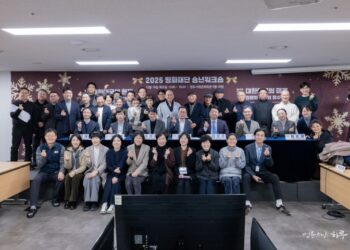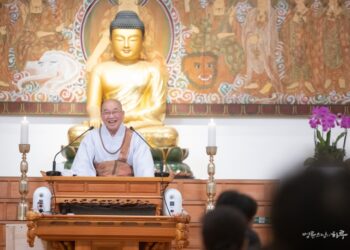Aug 4, 2025 – Day 2 of the Northeast Asian History Tour, Holbon Mountain Fortress, Ji’an
Hello. This is the second day of the Northeast Asian History Tour. Today, we will explore Holbon Mountain Fortress, the first capital of Goguryeo, in the morning, and in the afternoon, we will visit Gungnaeseong and Hwando Mountain Fortress, the second capital of Goguryeo.
The tour group woke up at 5 a.m., packed their luggage onto the buses, and set off for Holbon Mountain Fortress.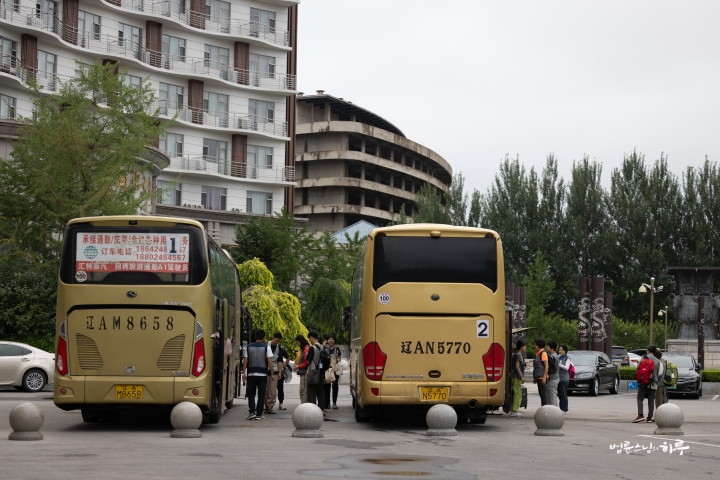
As we approached Holbon Mountain Fortress, the Hun River, which was called ‘Biryusu’ in ancient times, came into view. Holbon Mountain Fortress is located on the high peak of Wunü Mountain at 800 meters above sea level, northeast of Huanren, along the Hun River.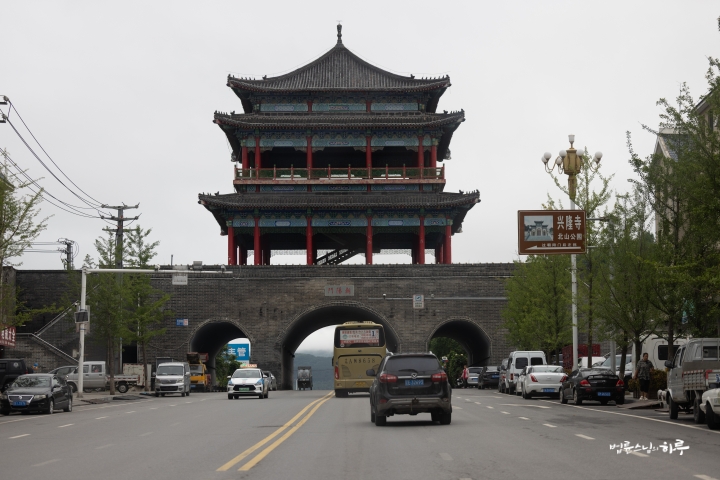
We arrived at the parking lot at the entrance of Holbon Mountain Fortress at 6 a.m. Since we were visiting Holbon Mountain Fortress this morning instead of yesterday as originally planned, our schedule became tight. We quickly transferred to mini-buses that would take us partway up the mountain.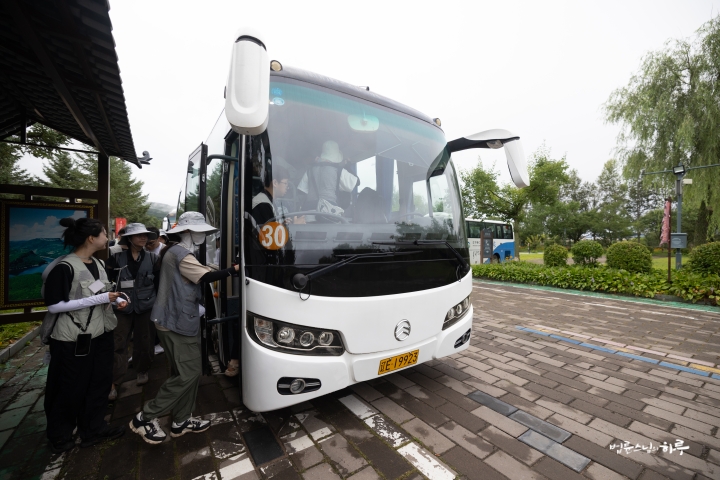
After getting off the mini-buses, we took a commemorative photo with participants from buses 1 and 2 who had arrived earlier, in front of a stone monument inscribed with “Wunü Mountain Fortress.”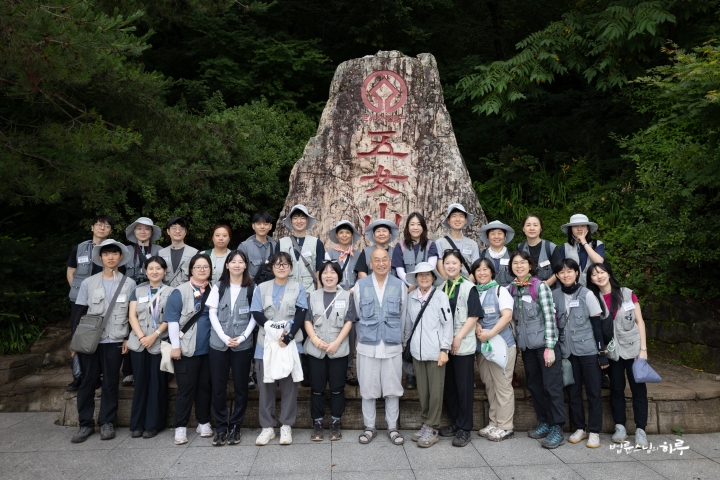
“Please go ahead first. I’ll go at the very back.”
A thousand steps stretched from the middle of the mountain to the summit. Sunim, having heart and knee problems, sent the group ahead and walked slowly at the back, using hiking sticks.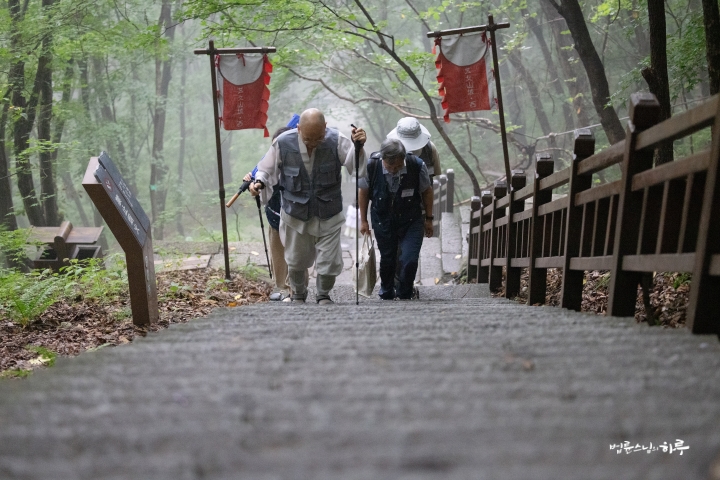
The seemingly endless stairs finally came into view. The air was cool after a light rain had broken the heat.
The group who had arrived at the west gate of the fortress before Sunim were listening to Lee Seung-yong’s explanation. Holbon Mountain Fortress was literally a fortress on top of a cliff. We could also see the saw-tooth construction method characteristic of Goguryeo fortresses.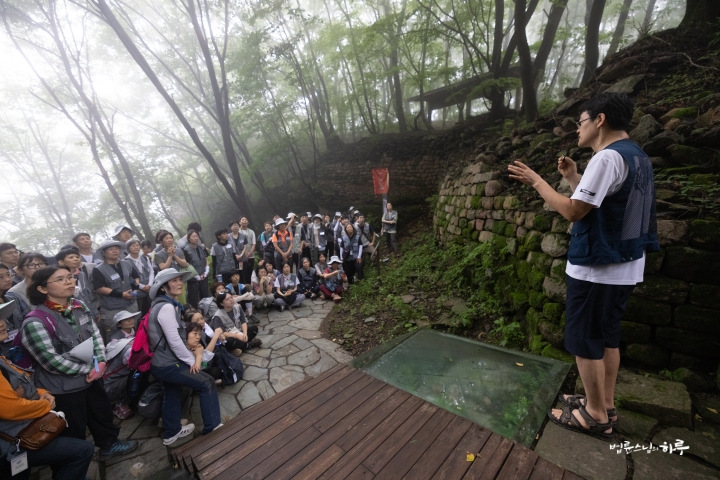
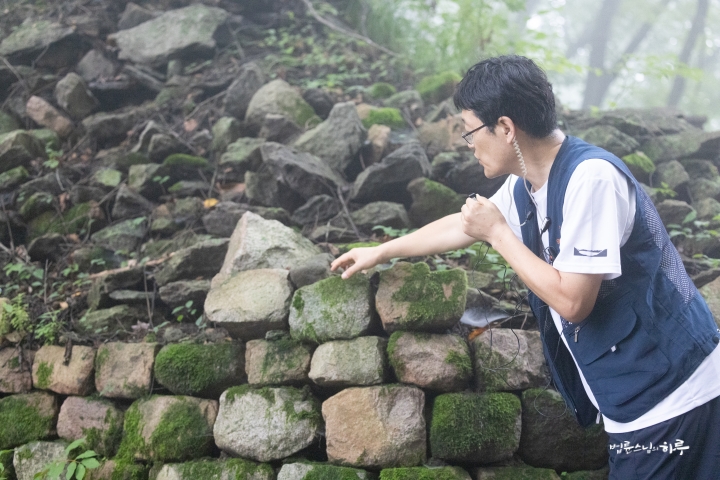
As the explanation continued, Sunim finally arrived at the west gate, and the group applauded with joy.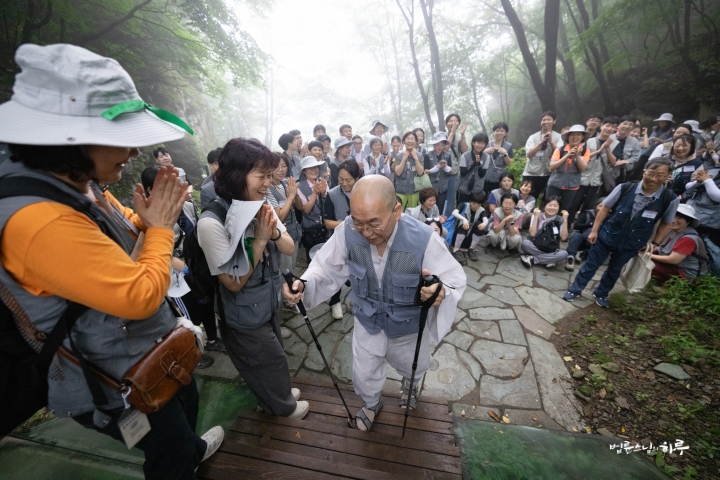
From the west gate onward, Sunim continued with the explanations.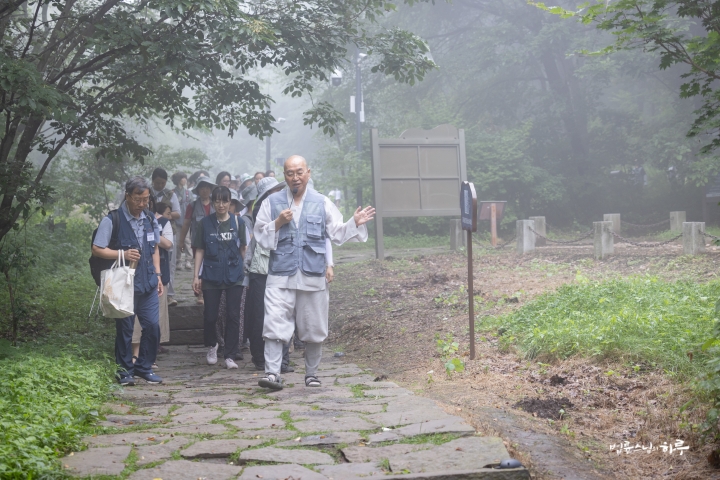
“We have arrived at Holbon Mountain Fortress, the first capital of Goguryeo.”
After viewing the observation deck, we passed through the site of the temporary palace and went by a small pond with a sign reading “Cheonji” (Heaven’s Pool).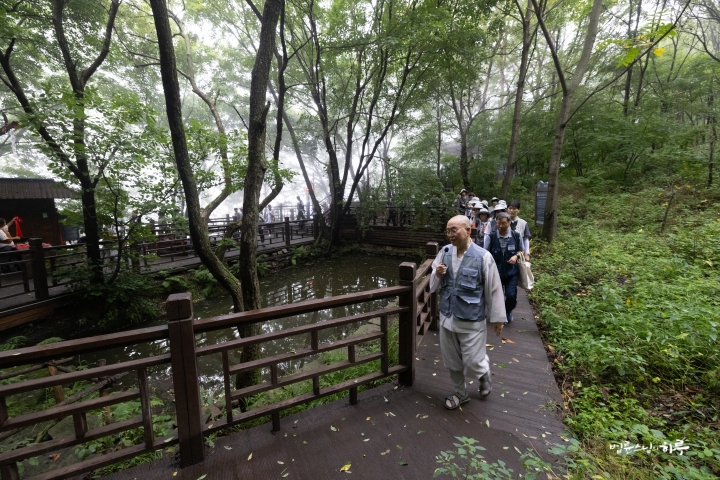
“This pond never dries up throughout the four seasons and supplied drinking water to the fortress. They also separated a smaller pond below for horses and animals to drink from.”
As we continued walking, we came across the site of the grain storehouse, followed by the barracks site.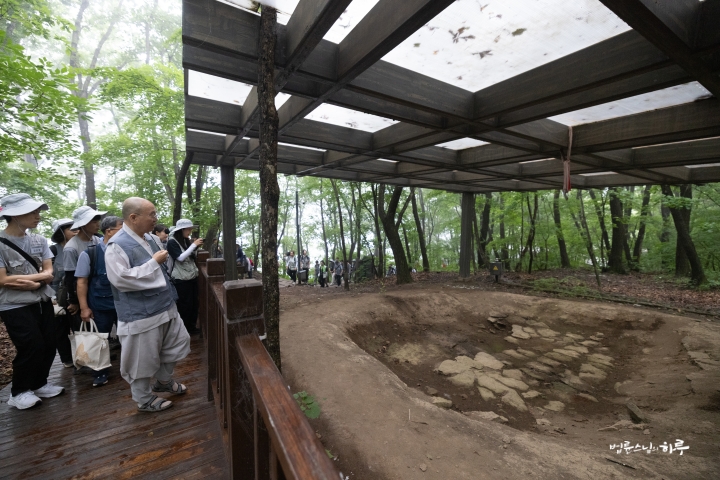
“This is where soldiers lived in huts with ondol (underfloor heating) systems. In other words, it was military housing. This structure has three flues, so it’s a ‘three-ondol house.’ They would light fires over there, and here’s the chimney. Such dwellings were discovered throughout this area.”
We could continuously see traces of where ondol systems had been. Ondol is a uniquely Korean feature, further confirming the site’s Goguryeo origins.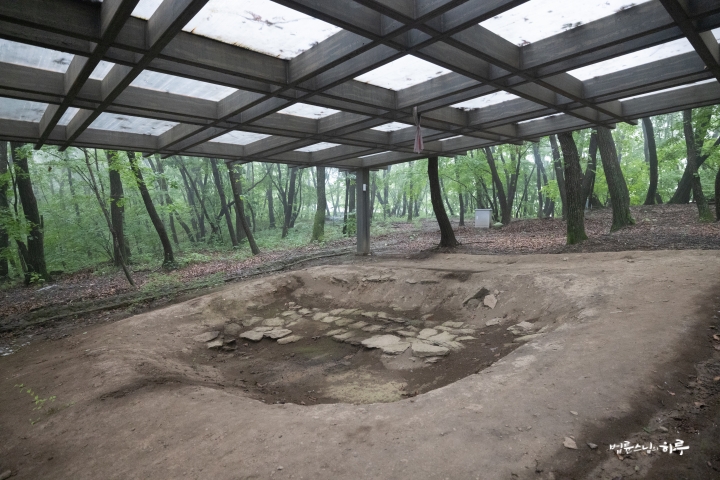
“Over there, they’ve covered the ondol with lids, and here they’ve removed the lids. This is a ‘one-ondol house,’ meaning a dwelling with one ondol system. You’ve all grown up with boilers, but do you really know what ondol is?”
“Yes.”
“The Goguryeo sites in Huanren and Ji’an have been registered as World Cultural Heritage sites by the Chinese government. China calls it the history of ethnic minorities, or ‘local history,’ but in reality, these are cultural heritage sites of Goguryeo, our ancient nation.” 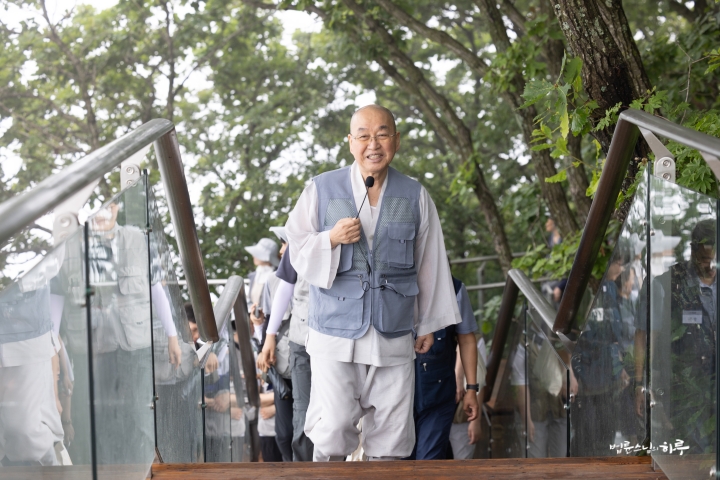
After examining various historic sites that served important functions in the fortress, we finally arrived at the command post located at the highest point in the south. During the Goguryeo period, this was where generals commanded battles. We thought we wouldn’t be able to see the view because it was cloudy in the morning, but the scenery was visible through the clouds.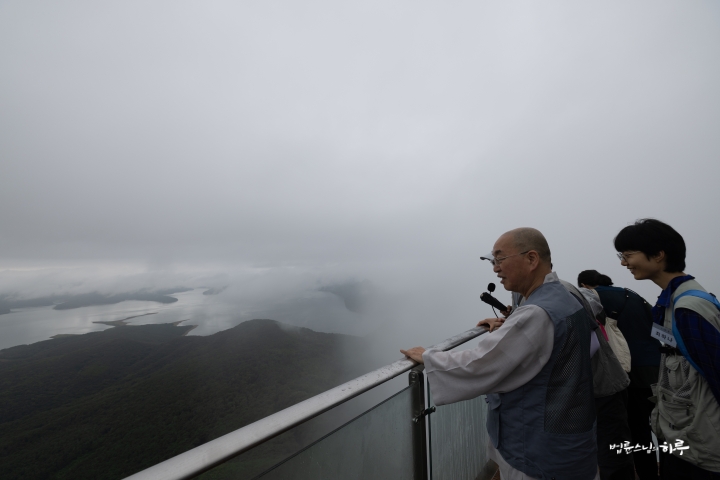
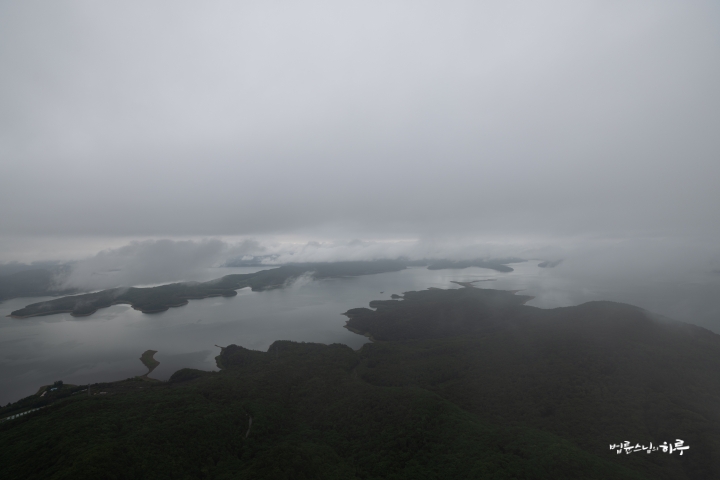
“Wow! The view is clear today. Someone among us must have accumulated good karma.”
The two command posts were well-equipped with safety features, making it feel like we were floating in the air. They were recently installed.
“The entrance fee was worth it.”
The view of the Hun River from the command post was similar to seeing Cheonji (Heaven Lake) from the top of Mt. Baekdu.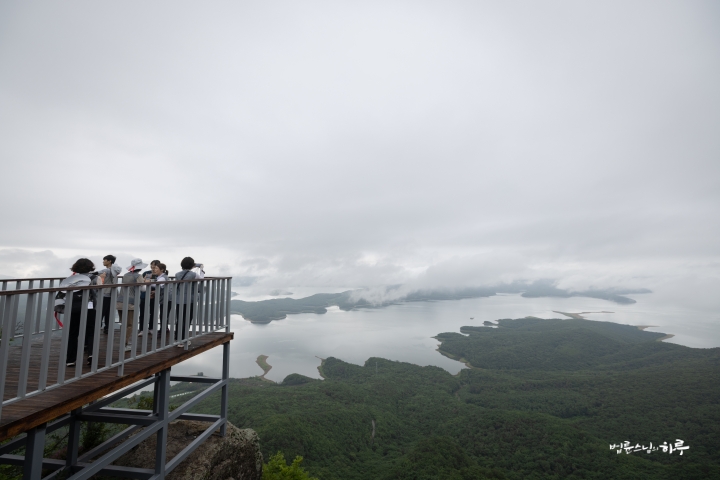
Everyone exclaimed at the spectacular view before them and gathered in small groups to take commemorative photos.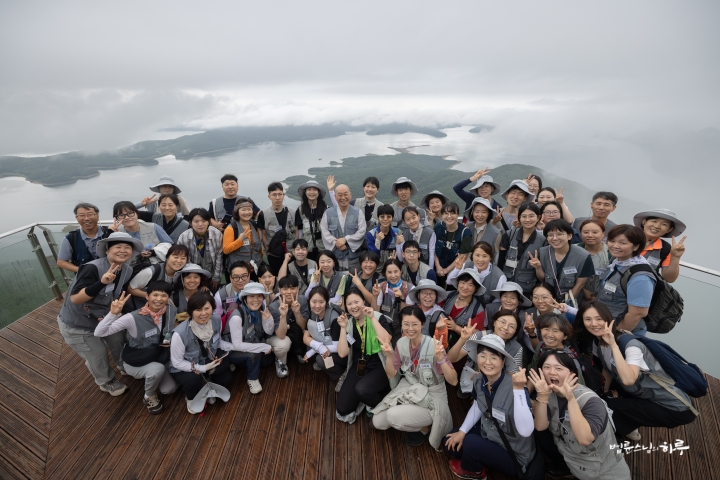
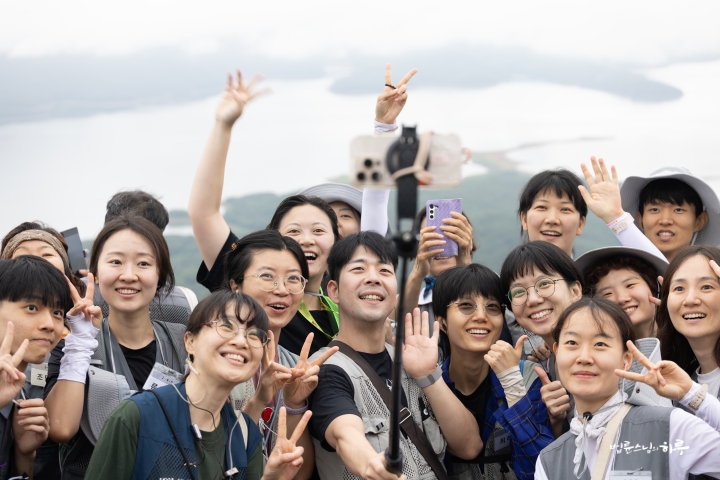
Leaving the magnificent scenery behind, we descended for quite a while along the Ilseoncheon stairs leading from the summit to the east gate.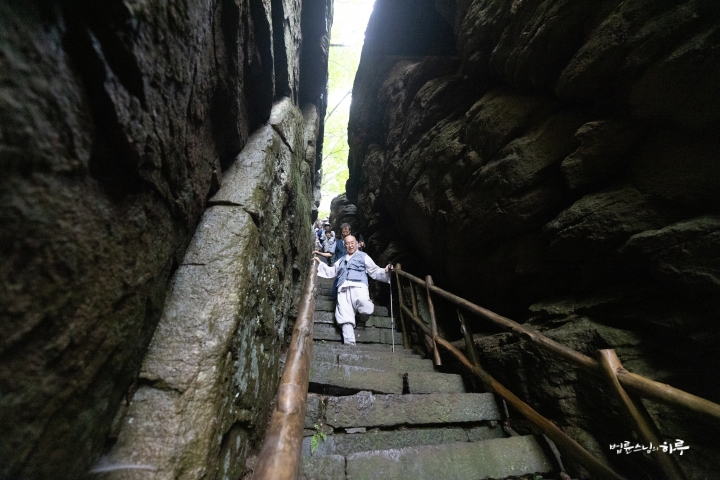
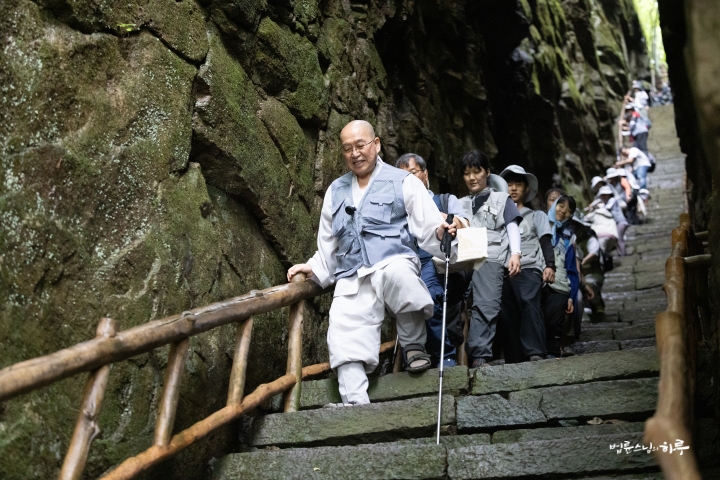
After descending below the cliff, a spring appeared at 600 meters above sea level where the eastern wall begins. Sunim dipped his hand in the spring and continued his explanation.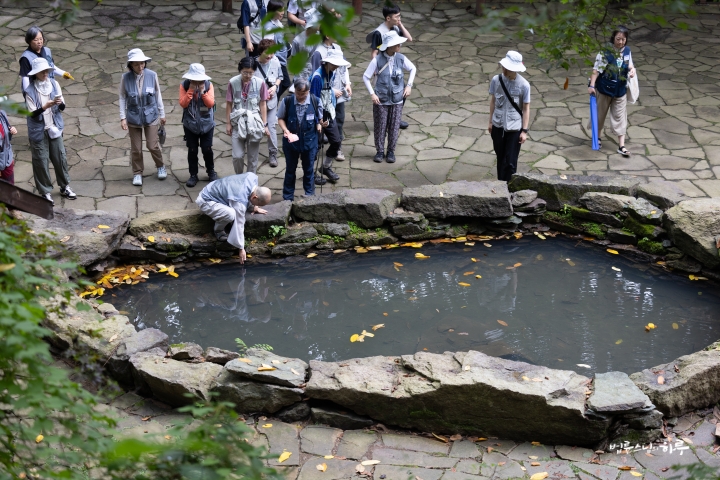
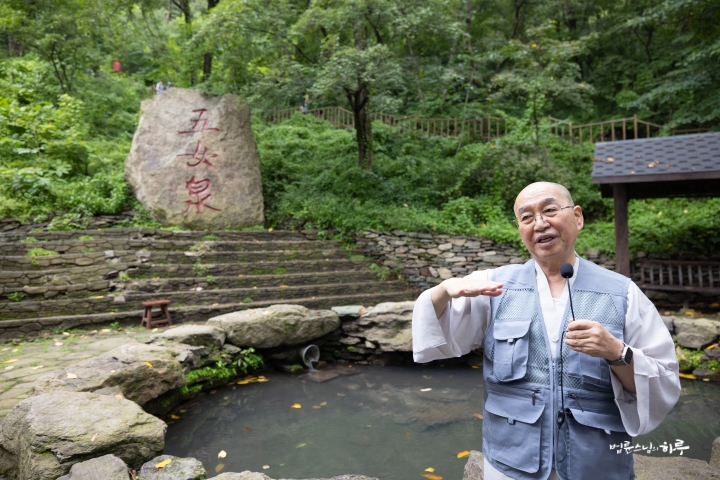
This spring was apparently to secure additional water supply beyond what was available from Cheonji and the well at the summit. Since the mountain summit is all cliffs, they could have just built walls and gates on the west side, but the reason they built east and south gates around the eighth ridge was probably also to obtain water from this spring.
Following the traces of where the eastern wall had been, we soon came upon the east gate. The east gate retained a gong (工)-shaped gate structure, clearly showing the characteristics of Goguryeo fortresses.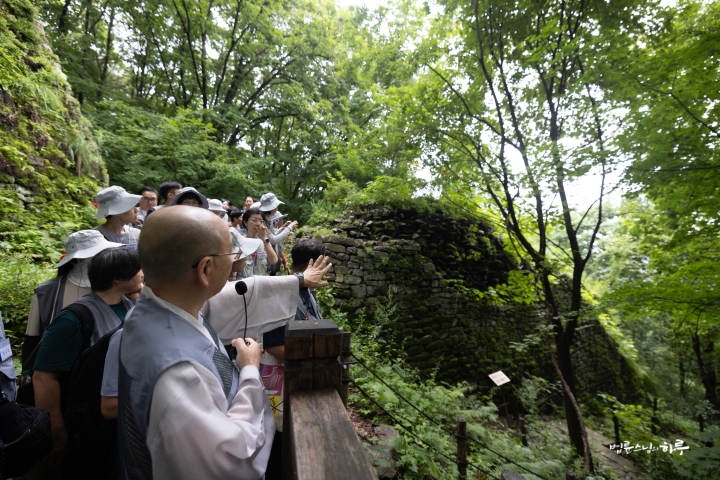
“This is the east gate. The reason the east gate is important is that when walls are connected and you need to install a gate, you have to make an opening like this. Since enemies would attack through there, they created an ongseong (barbican) structure for defense. Instead of continuing the wall straight, they made it connect in a slightly rounded shape and then installed the gate there. With this ongseong structure, when enemies attack, you can defend not just from one side but from the other side as well. However, this east gate has a gong (工)-shaped ongseong. If a gate is installed on a straight wall, it’s easy for enemies to break through. To compensate for this, they made the walls meet at an offset and created a gate in between so you have to enter from the side – this is the gong-shaped gate structure.
The stones on the outside of the wall were made smooth like cement so enemies couldn’t climb up, while the stones on the inside were interlocked with long stones so they wouldn’t collapse. Even if the outer wall collapsed, the inner structure remained intact. But if left like that, people could still step on them to climb up, so for palace walls, they would apply plaster to the surface to make it even more slippery.” 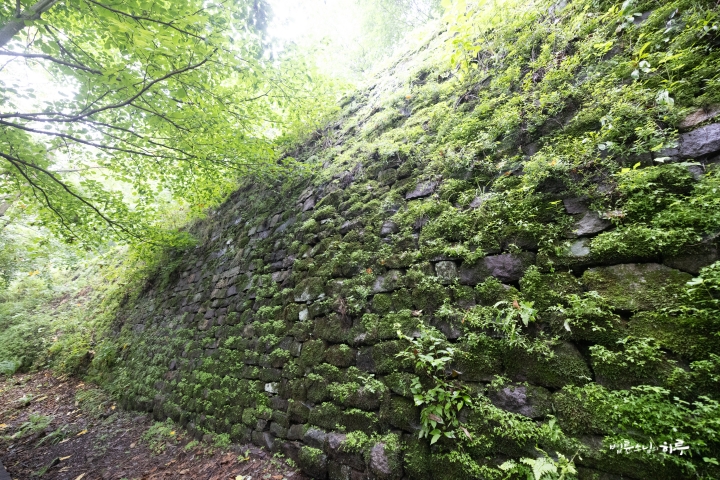
Although covered with moss and grass, the eastern wall and the arched gate were clearly visible. Sunim said with a smile.
“Today, since we got a good look at the eastern wall, the admission fee was totally worth it.”
Right after passing through the east gate, the south gate appeared.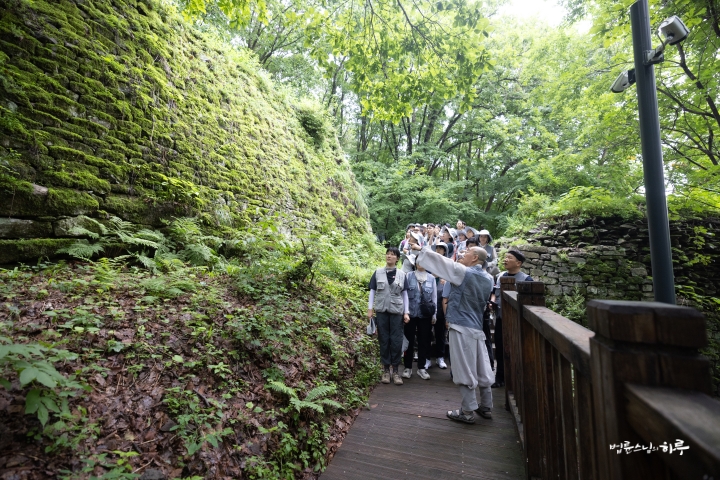
“Now, this is the south gate. This is the southern wall. Can you see the watchtower at the top? From here, they built the wall all the way down along the cliff. That way, no one could enter through here. Here too, the original form of the wall remains intact at the lower part.”
After viewing the south gate, they got back on the mini bus and came down.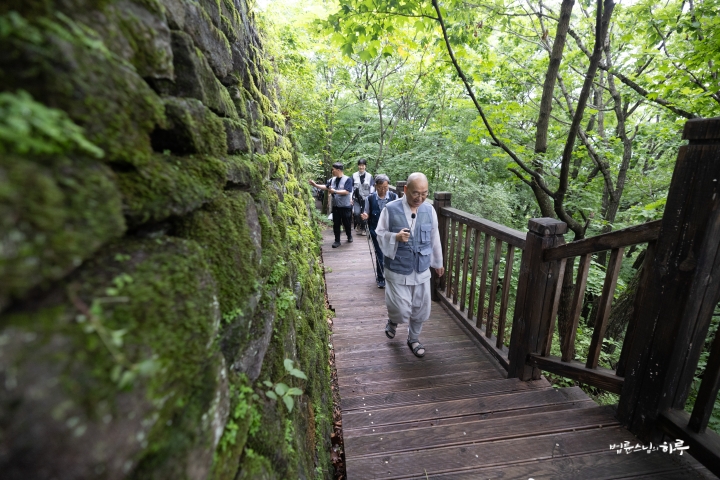
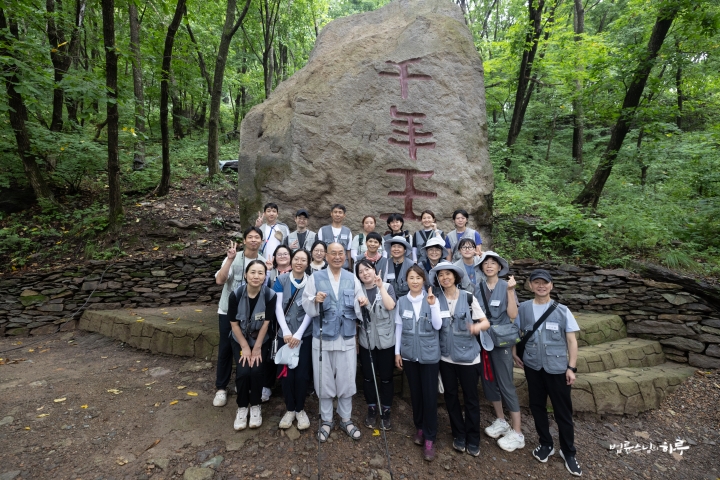
“When we get back to the accommodation, we need to eat quickly. That way the hotel can clear the dishes and prepare lunch.”
They returned to the accommodation and had breakfast at 9:20 AM.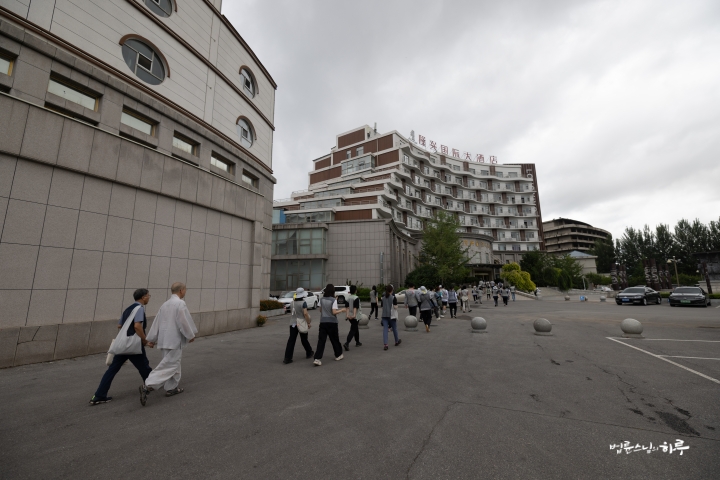
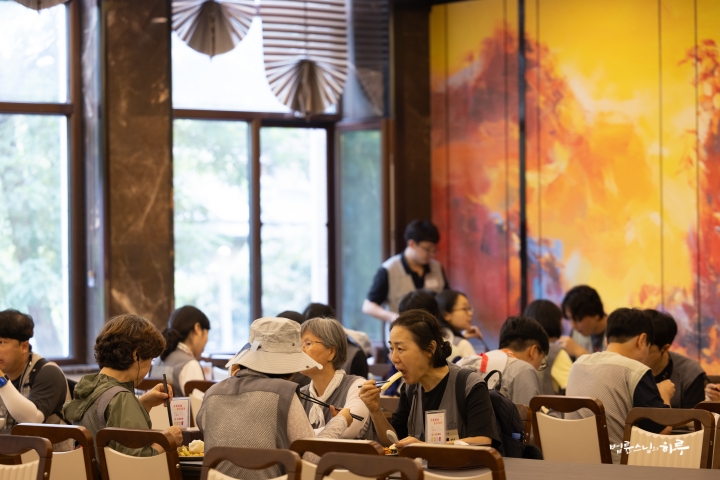
After a hurried meal, at 10 AM they headed to Ji’an, which was Goguryeo’s second capital. The tour group had now passed through Liaoning Province and entered Jilin Province.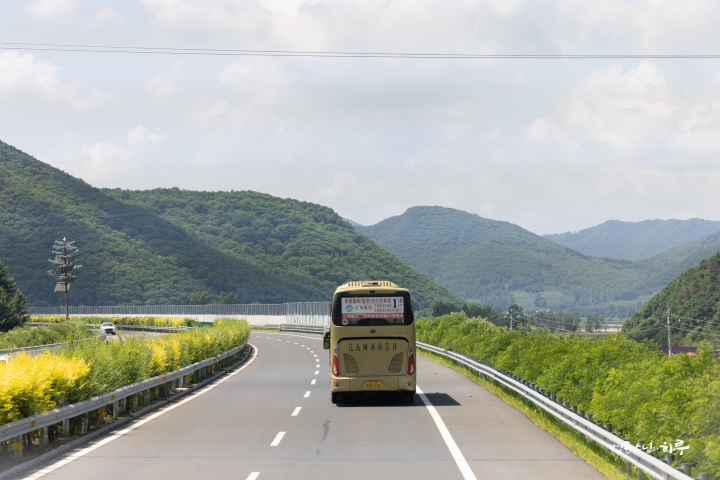
There are two routes from Huanren to Ji’an: the northern route and the southern route. Taking the southern route allows one to see how Goguryeo utilized the rugged mountains to defend the country, but today, due to the tight schedule, they took the northern route which has better road conditions. During the journey, Sunim told the story of Goguryeo’s founding on the bus. The participants were immersed in the vivid history of Goguryeo.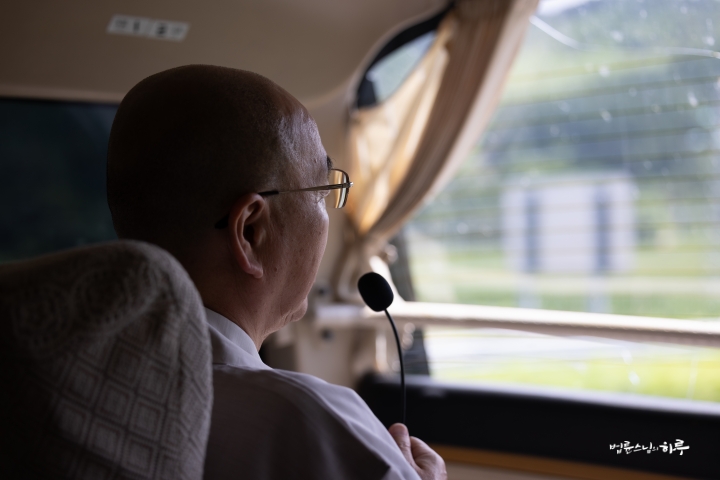
“We are now leaving Huanren, Goguryeo’s first capital, and heading to Ji’an, its second capital. According to historical records, Goguryeo was founded in 37 BCE and lasted for a total of 705 years until it fell to Tang Dynasty’s invasion in 668 CE. It has a history of about 700 years. However, China considers Goguryeo as part of Buyeo, so combining Buyeo and Goguryeo, they sometimes view it as having nearly 1,000 years of history. This is why ‘A Thousand Years of History’ was written in large letters on the rock we just saw at Holbon Mountain Fortress.”
How Did Goguryeo’s Thousand-Year History Begin?
After Gojoseon fell to Emperor Wu of Han’s invasion, the Four Commanderies of Han were established on Gojoseon’s land, and our people struggled to reclaim their ancient territory. At this time, not all of our people’s nations had fallen. It can be said that Beon-Joseon, one of the Three Joseons (or Three Hans), had fallen. However, since the king of Buyeo was passive in fighting against Han, a figure named ‘Godumak’ raised a volunteer army and led the Damul forces to fight against Han’s invasion. When he ascended to the throne of Buyeo, the existing Buyeo king is said to have moved east and established ‘Eastern Buyeo.'”
According to Goguryeo’s founding myth, Go Jumong escaped from Eastern Buyeo with three friends and traveled south, then settled at Holbon Mountain Fortress in Jolbon and established a nation. Growing up, Jumong faced discrimination in the royal palace and became the subject of gossip because he was not King Geumwa’s biological son and was an illegitimate child. Eventually, when he was falsely accused by Crown Prince Daeso and felt his life was threatened, he had to flee.”
In other records, there is also a theory that Go Jumong, as a member of the Buyeo royal family, married Princess Soseono of Jolbon Buyeo, adopted her two sons, and then succeeded to the throne of Northern Buyeo. According to this tradition, Go Jumong did not simply establish a new nation but inherited the legitimacy of the Buyeo royal line and emphasized the legitimacy of his rule through the national name ‘Goguryeo.'” 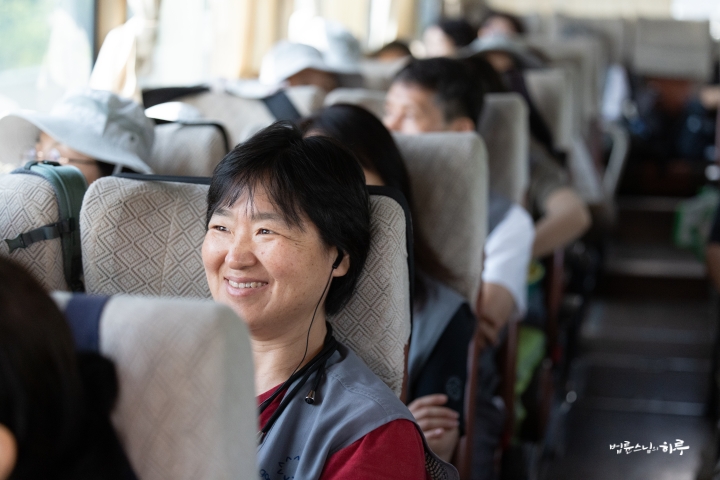
In 37 BCE, shortly after Go Jumong founded the nation, his son Yuri came to find him. Jumong had married Lady Ye when he was in Eastern Buyeo. When he sensed danger, he fled alone, leaving behind his mother and wife. Even while living with Soseono after his escape, he always kept his mother and wife Lady Ye in his heart. One day, a son came to him claiming to be Jumong’s legitimate heir born to Lady Ye. In the old tales, Yuri brought proof of his legitimacy. When Go Jumong left Buyeo, he broke his sword and buried the tip under the floor, saying, “If a son is born after I leave, I will recognize him as my son if he brings this token.” Yuri, born to Lady Ye, found the token after much effort and went to Jumong. When Jumong confirmed that he was indeed his son, he recognized him as his legitimate heir and gave Yuri the position of crown prince. About five months later, Jumong died.
This caused significant political turmoil. Jumong had become king based on the Northern Buyeo forces of Soseono and her two sons, Biryu and Onjo. However, both Jumong and Yuri were immigrants. When Yuri, also an immigrant, was given the position of crown prince and eventually ascended to the throne, Soseono soon took Biryu and Onjo and moved south. Onjo later founded Baekje. Thus, Soseono established Goguryeo through her husband and founded Baekje through her son. She could perhaps be considered the greatest female political leader in our history.
After his enthronement, King Yuri moved the capital to overcome political instability. Holbon Fortress, where Soseono’s forces were based, was not his political foundation. In ancient times, to eliminate the power and vested interests of the indigenous political forces living in the capital, one had to move the capital. 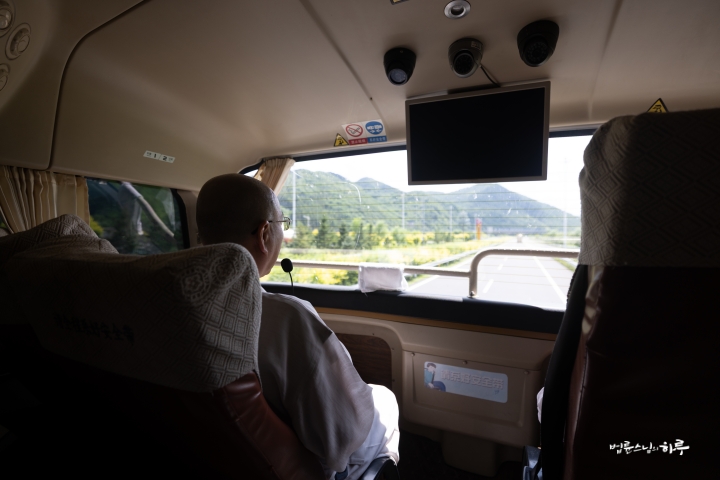
According to historical records, one day a pig that had been captured for a ritual sacrifice escaped. After chasing the runaway pig for several days, they finally caught it and found that the surrounding environment was excellent. That place is now Ji’an, where Hwando Mountain Fortress and Gungnae Fortress are located. The weather was mild and it was an excellent location for defending against enemies. So they suggested making this place the capital, and the king, hearing this advice, moved the capital to Ji’an. Of course, the local powers would have strongly opposed the relocation. Overcoming this opposition, King Yuri moved the capital here to Ji’an in 3 A.D. The reason this pig story emerged in relation to the capital relocation was probably to religiously persuade those who opposed moving the capital by saying, “This is divinely ordained.”
Gungnae Fortress served as the capital of Goguryeo for 425 years until King Jangsu moved the capital to Pyongyang in 427. The 425 years when Gungnae Fortress was the capital represents almost 60 percent of Goguryeo’s history. Since this was when Goguryeo was at its strongest, more than 10,000 royal tombs and noble graves are scattered throughout this region. Therefore, we can say that the essence of Goguryeo culture is here in Ji’an.”
After a two-hour bus ride, they arrived in Ji’an at 12:30 PM. They headed first to the General’s Tomb.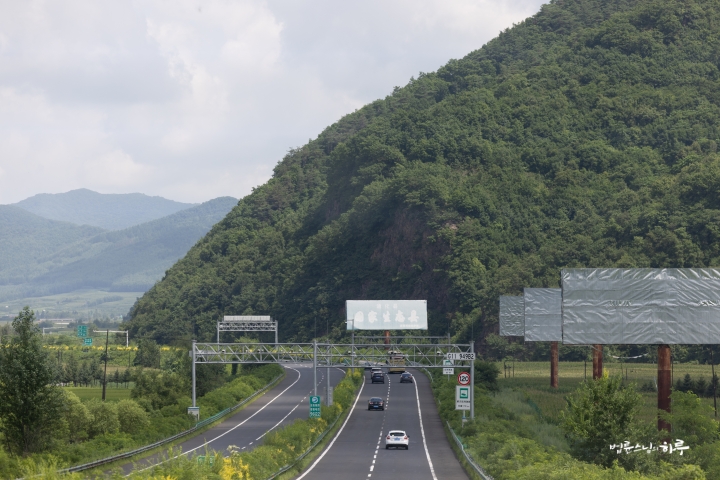
When they arrived at the General’s Tomb parking lot, Chinese public security officers appeared and conducted one-on-one questioning to verify identities. It took a long time as they had to record occupations, addresses, and other details. The Chinese public security also completely prohibited any explanations inside the historic site. While waiting for the identity verification to finish, Sunim explained about the General’s Tomb inside the bus.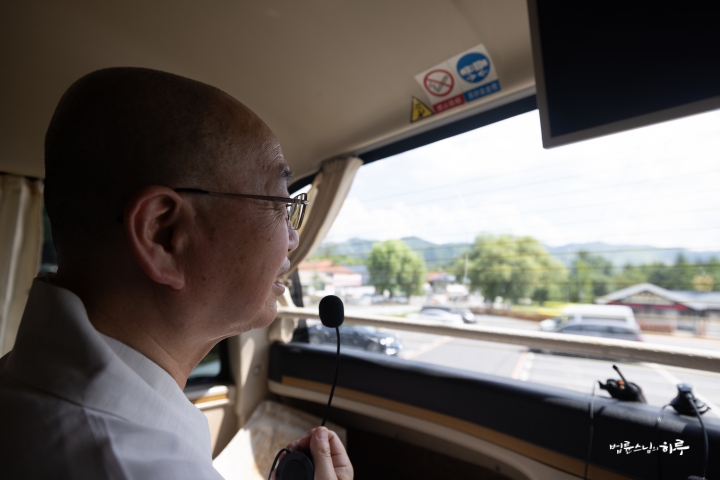
“The General’s Tomb is a massive stone tomb with seven tiers. The first tier consists of four layers, and the rest have three layers each, making a total of 22 layers. It is made up of about 1,100 stones and was supported by 12 guardian stones on four sides. The guardian stones prevent the tomb from bulging outward due to gravity. We can say that the General’s Tomb is the most representative tomb of Goguryeo. The burial chamber is on the fifth tier. It has a pyramid-like structure with the burial chamber on top. The burial chamber has a door, and a large stone was placed on top to create a roof. Records indicate that an altar was installed on top of that for offering sacrifices to heaven. The altar on top of the tomb was a wooden structure, so it no longer exists today. Although the tomb has some cracks and has partially collapsed, it still maintains its complete form. While the exterior of the tomb is built with large stones, the interior is filled with river stones that have been rounded smooth over time in the river.
The General’s Tomb is currently presumed to be King Jangsu’s tomb. Because King Jangsu lived a long life, he had relatively ample time to build his tomb, so all the stones filling it are river stones. Since river stones are hard and don’t break easily, the tomb has not collapsed and shows the most complete form closest to its original state to this day. The large stones weren’t just stacked; they were carved with grooves and fitted precisely together. In other words, the upper stones aren’t simply placed on the lower stones – grooves were carved and the stones were fitted tightly into place.
Inside the burial chamber are two stone platforms, enshrining both the king and queen. Some tombs have three platforms. In Goguryeo, the second queen was not a concubine but an official queen. Therefore, we can say that the king, first queen, and second queen were enshrined together in the burial chamber.”
After the identity verification was completed, they finally entered the General’s Tomb. The participants exclaimed in awe at the massive and beautiful appearance of the General’s Tomb.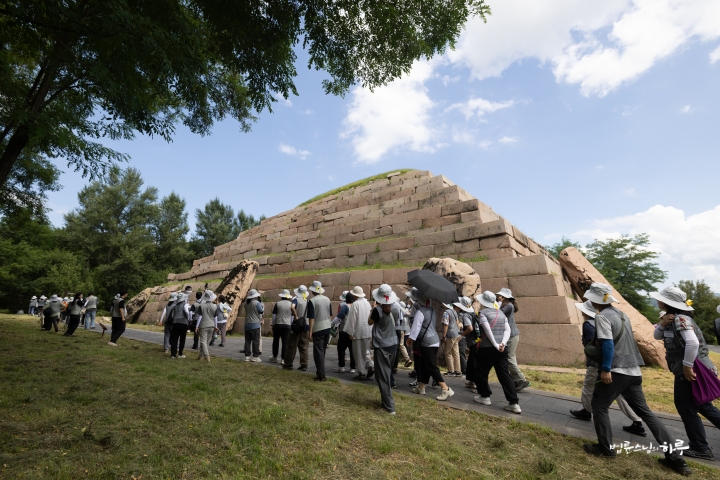
They took group photos and examined various parts of the General’s Tomb while reviewing what they had just learned from Sunim.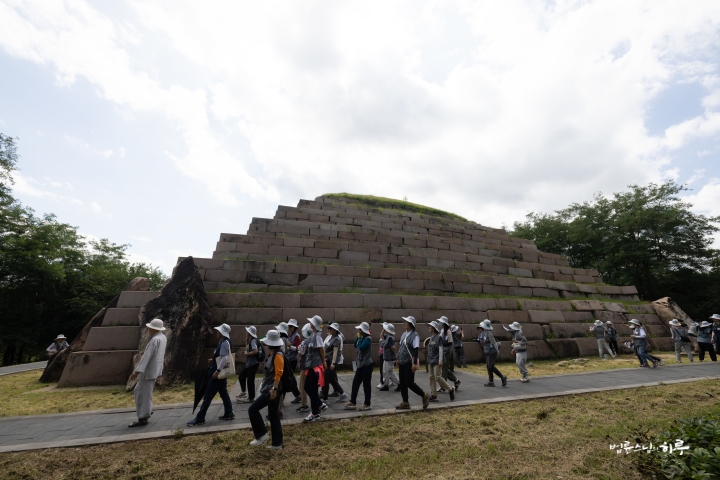
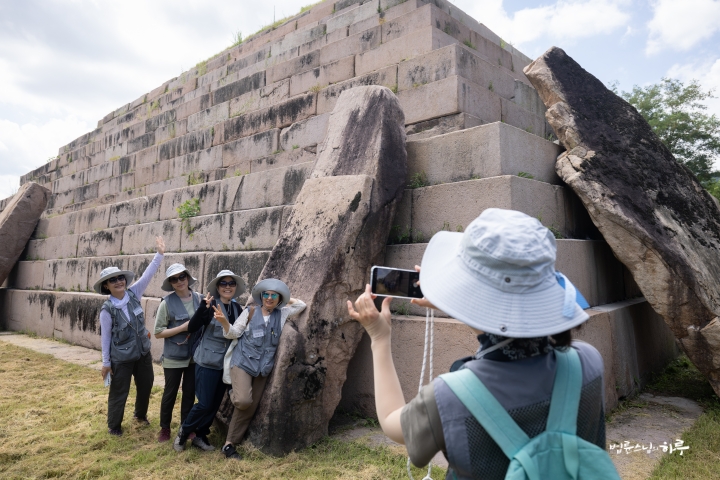
As Sunim had explained, one guardian stone had broken and disappeared, and amazingly, the stones on that side were bulging outward. They could also confirm the precision of carving grooves in the base stones to fit the upper stones. The more they looked, the more amazed they were at how such large stones could have been carved and transported.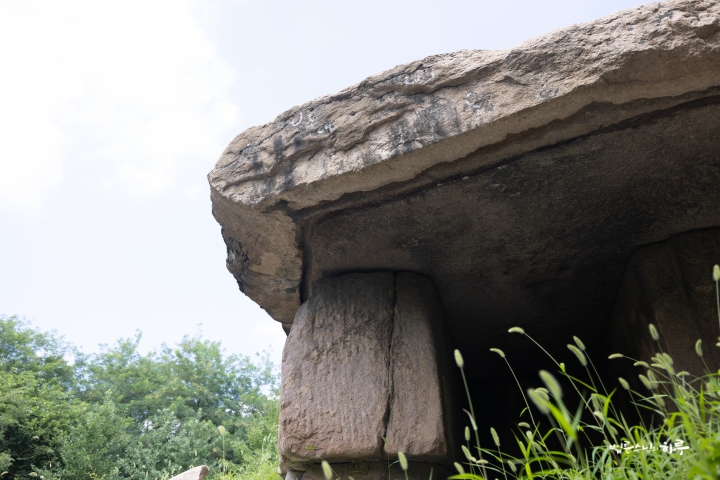
There was also a small tomb behind the General’s Tomb. Sunim told them about this tomb.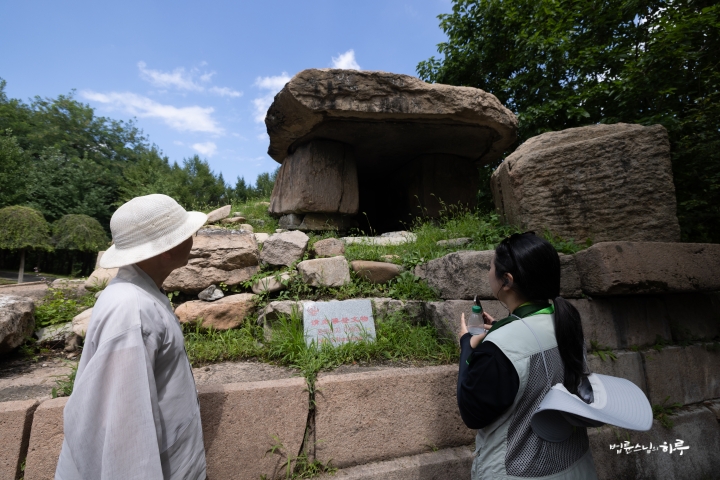
“This small tomb is presumed to possibly be the tomb of concubines who served the king.”
Next, they viewed the Gwanggaeto the Great Stele and the tomb of King Gwanggaeto the Great. Above all, everyone was amazed by the magnificent size that couldn’t be fully appreciated in books.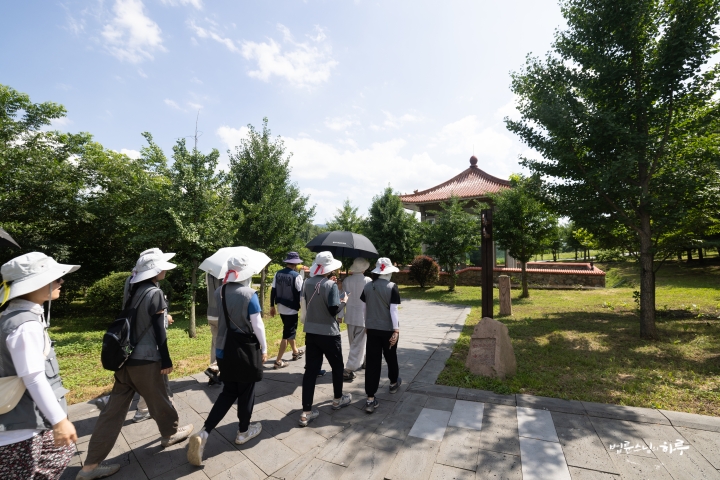
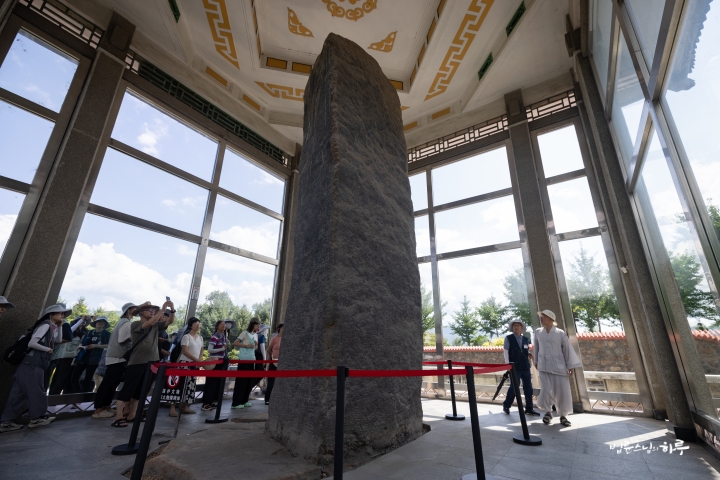
“The full name of King Gwanggaeto the Great is Gukgangsang Gwanggaeto Gyeongpyeongan Hotaewang (國罡上廣開土境平安好太王). This stele is the largest among Korean steles. The first six lines of this stele record the historical legitimacy from King Jumong’s founding of Goguryeo to King Gwanggaeto the Great, and below that are recorded the achievements of King Gwanggaeto the Great.”
They took commemorative photos in front of the Gwanggaeto the Great Stele and slowly walked toward the tomb.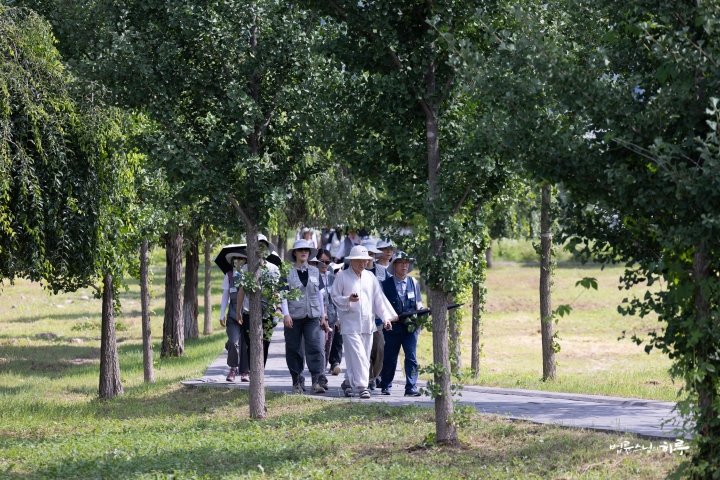
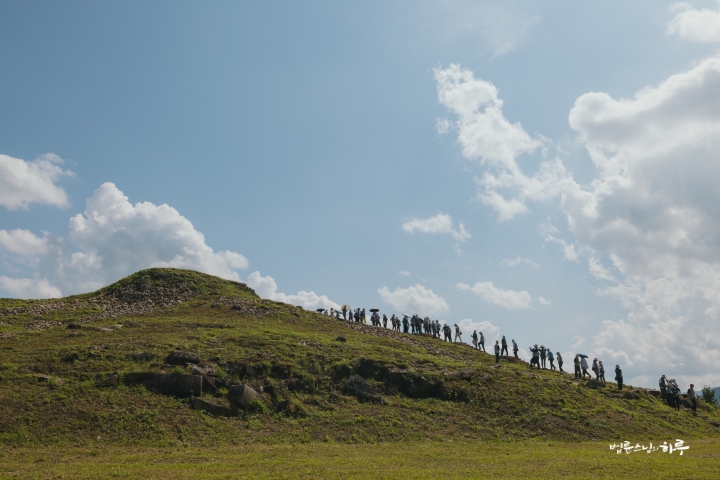
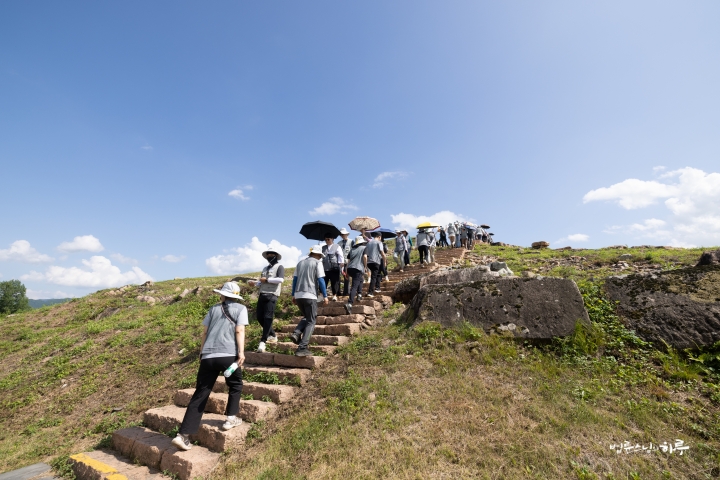
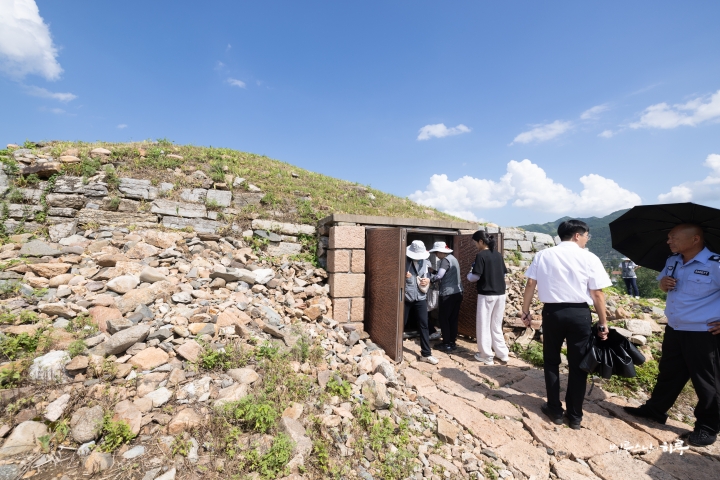
“The tomb of King Gwanggaeto the Great is almost twice the size of the General’s Tomb. While the General’s Tomb measures about 33 meters in length and width, King Gwanggaeto the Great’s tomb measures about 65 meters. It’s almost twice as long, four times the area, and up to eight times the volume. Although the tomb is enormously large, because the king died young, they couldn’t prepare the tomb construction for long. So you can see that they initially filled it with river stones but later used mountain stones. Mountain stones are not round like river stones but have edges, so over time the stones broke and the tomb collapsed. To prevent stones from protruding to the side, they erected guardian stones weighing about 30 tons beside the tomb. Because King Gwanggaeto the Great’s tomb was so large, even though they placed five guardian stones on each side, it still collapsed. The gravel stones inside are all exposed outside, so from a distance, the stone slabs stacked outside are hard to see, giving the impression of a large stone mound, as if gravel had been piled up. However, if you look closely, you can understand that it was originally a tomb of the same form as the General’s Tomb, but it collapsed.”
Although King Gwanggaeto the Great’s tomb had lost its form and collapsed, making it difficult to recognize its original appearance, they were overwhelmed by its size and enormous scale. They felt deeply moved, sensing the spirit of their ancestors who commanded the vast territory from Pyongyang to the Manchurian plains.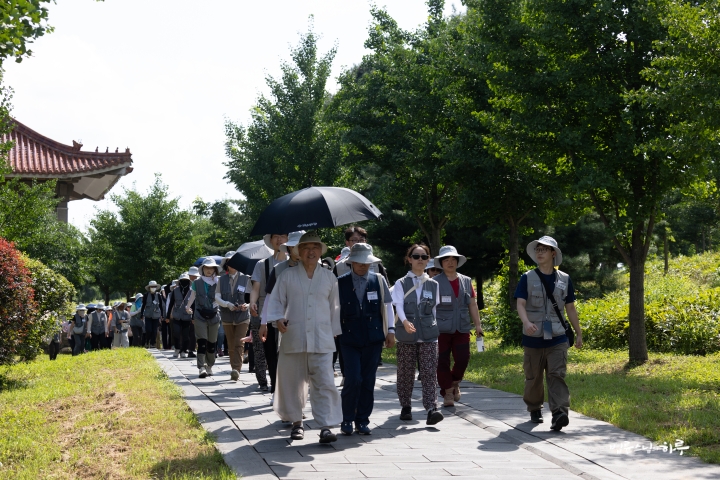
After viewing the General’s Tomb and King Gwanggaeto the Great’s tomb, they arrived at a restaurant at 2:30 PM for lunch.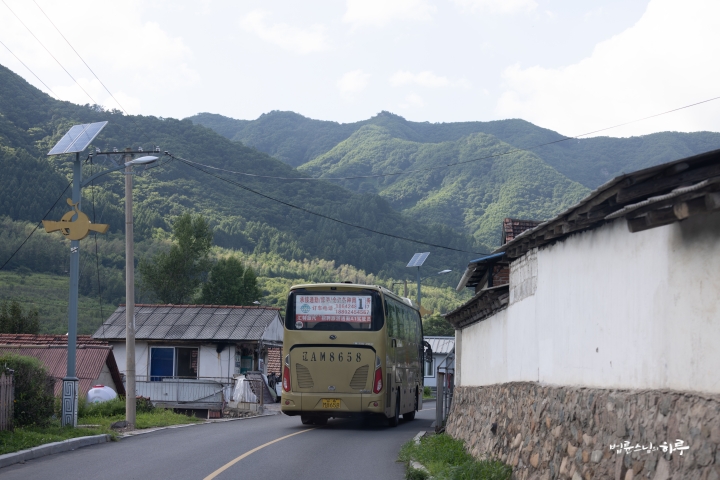
After quickly finishing lunch in 30 minutes, they headed to Hwando Mountain Fortress after 3 PM. While riding the bus, they could see the entire view of Hwando Mountain Fortress from afar through the window. Sunim explained about Hwando Mountain Fortress inside the bus.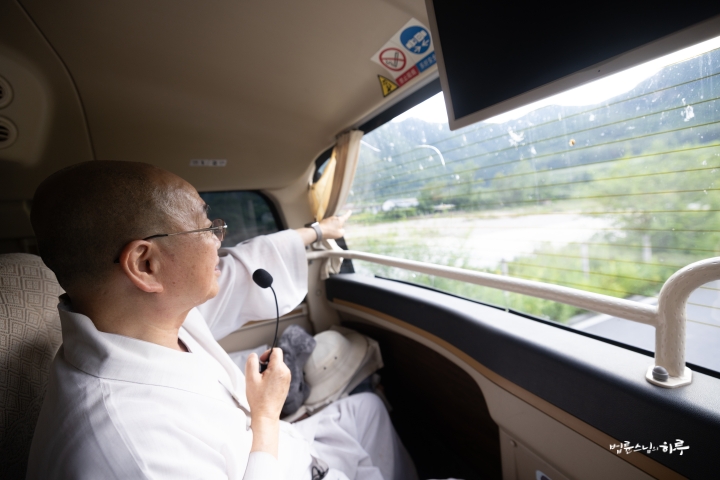
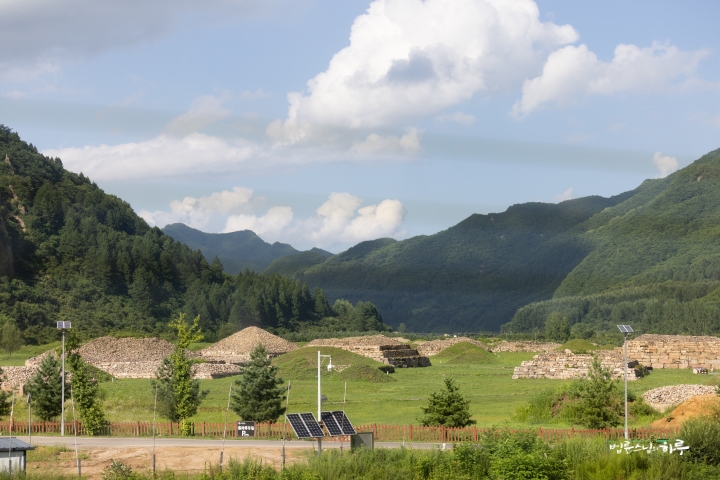
“This place where we’ve arrived is Hwando Mountain Fortress. The Tonggou River flows beside it, and the fortress walls extend along the foothills for about 7 kilometers in total length. Here at the south gate, the entrance to Hwando Mountain Fortress, there is an ongseong (crescent-shaped defensive wall), with a semicircular entrance. It’s an ongseong designed to defend against enemy attacks. While the ongseong we saw at Holbon Mountain Fortress this morning was very small, this one is truly large, circling around the valley in a semicircle.
King Yuri moved the capital of Goguryeo to present-day Ji’an in 3 A.D. The flatland fortress is Gungnae Fortress, located between the Yalu River and Tonggou River, while Hwando Mountain Fortress on the other side defends against enemies. Although Hwando Mountain Fortress is not as steep as Holbon Mountain Fortress that we saw earlier, it has excellent geographical conditions: the front is a cliff with the Tonggou River flowing below, inside the fortress are two valleys providing abundant water, and there is some farmland within the fortress, allowing for long-term confrontation with enemies in times of crisis. That’s why they built a mountain fortress here and built Gungnae Fortress, a flatland fortress, by the Yalu River.”
When they arrived at Hwando Mountain Fortress, the magnificent fortress walls along the mountain slopes came into view at once. The participants gazed at the walls in admiration.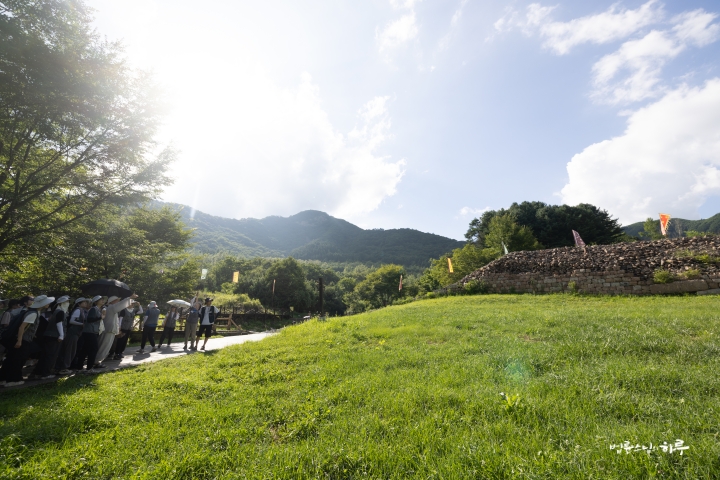
Before touring the mountain fortress, everyone took a group photo in front of the ongseong at the south gate where the fortress walls were clearly visible.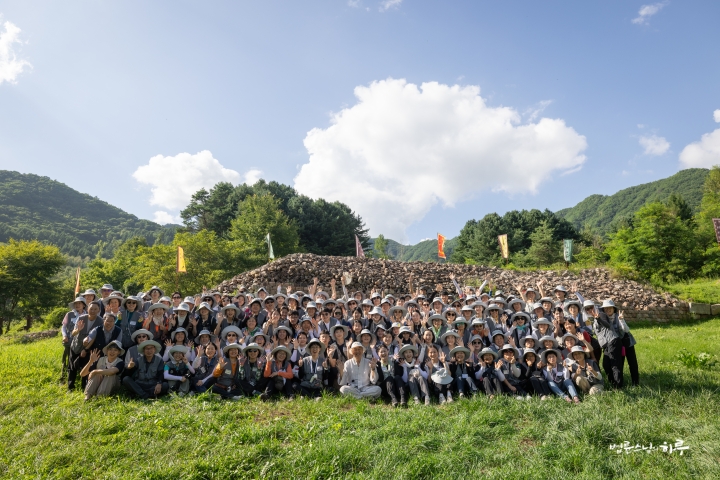
Following Sunim’s guidance, they began touring Hwando Mountain Fortress.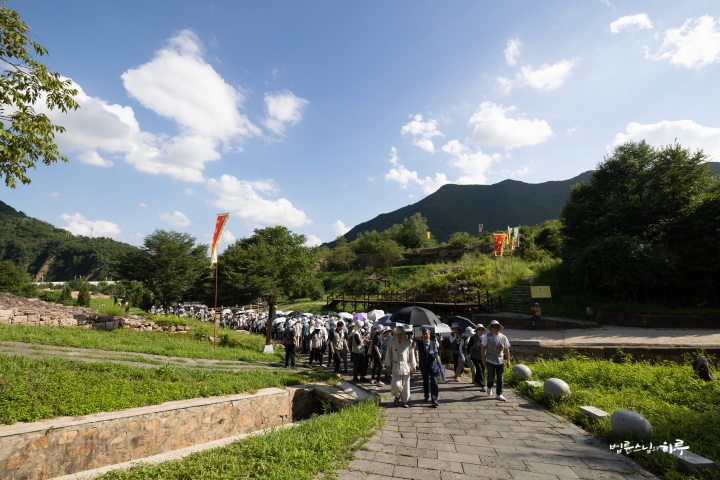
Upon entering the fortress, a pond appeared first. Sunim told them a story about this pond. When the Liaodong Governor invaded Goguryeo, they caught carp from this pond and sent them to the enemy forces to give the impression that they still had plenty of food, causing them to withdraw on their own and thus safely defending Hwando Mountain Fortress.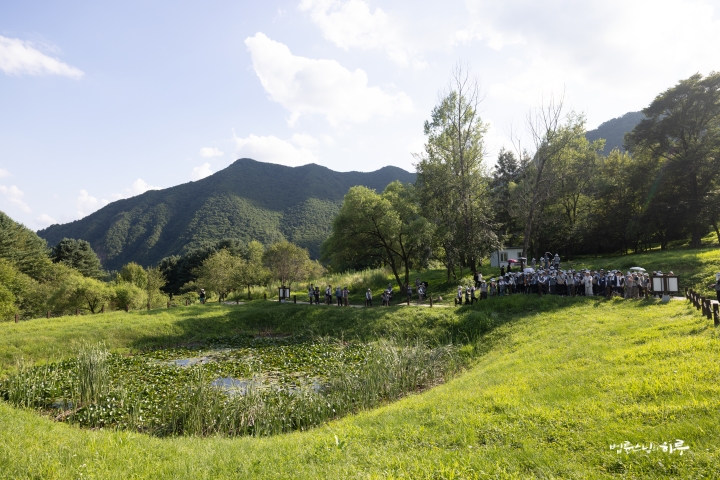
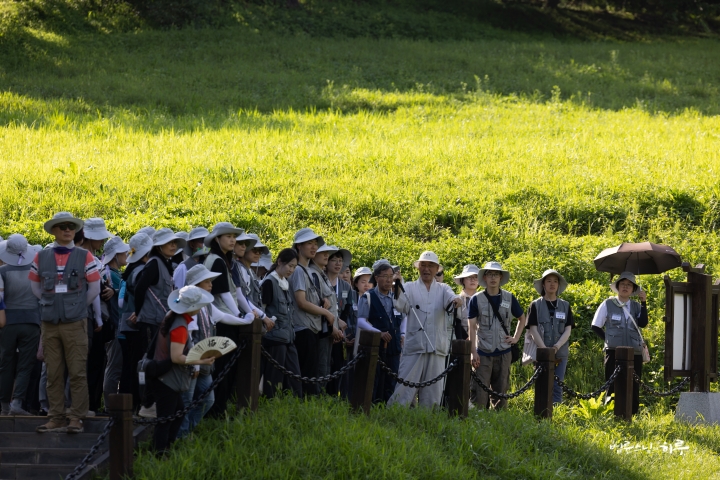
Going up a bit from the pond, they came to an observation post where Gungnae Fortress, 2.5 kilometers away, was clearly visible and enemy invasions could be easily detected.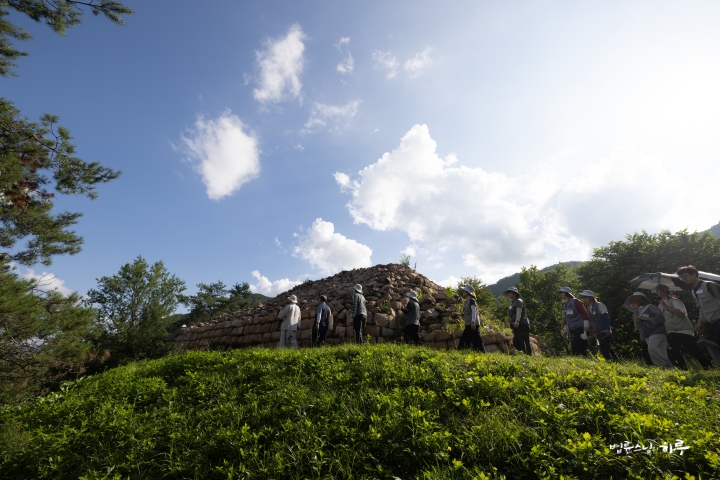
In front of the observation post, there was a site in the pine forest presumed to be military barracks remains. Scholars announced that during excavation, a pile of soil mixed with 1,000-year-old human feces was discovered, suggesting it was used as a toilet.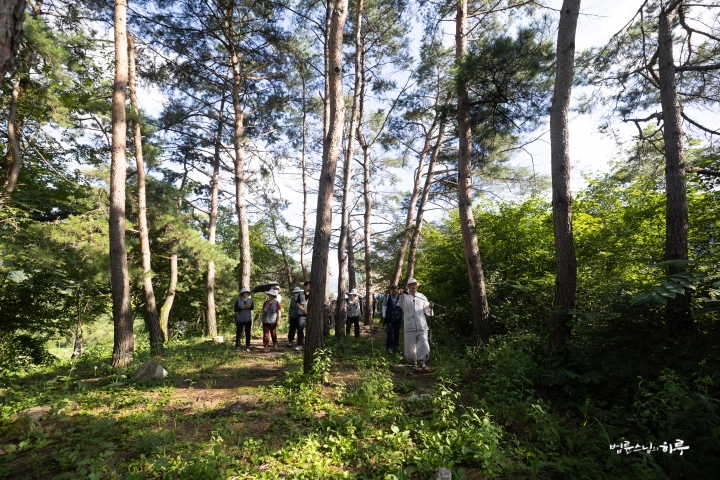
Deep inside the mountain fortress were the palace ruins where the king was said to have stayed. They quietly felt the breath of their ancestors.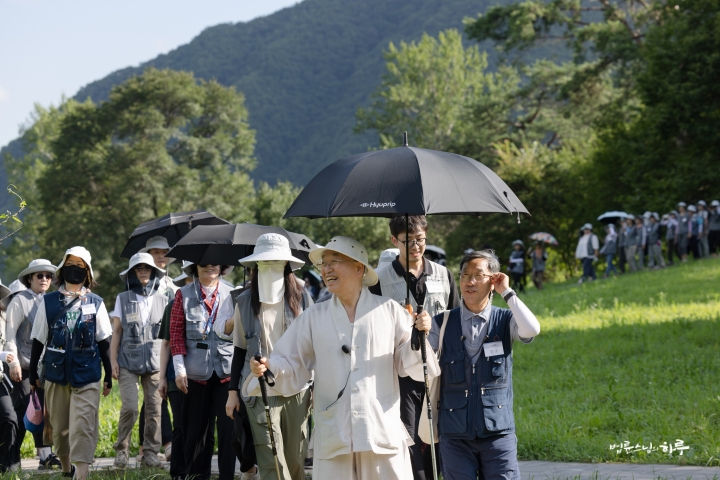
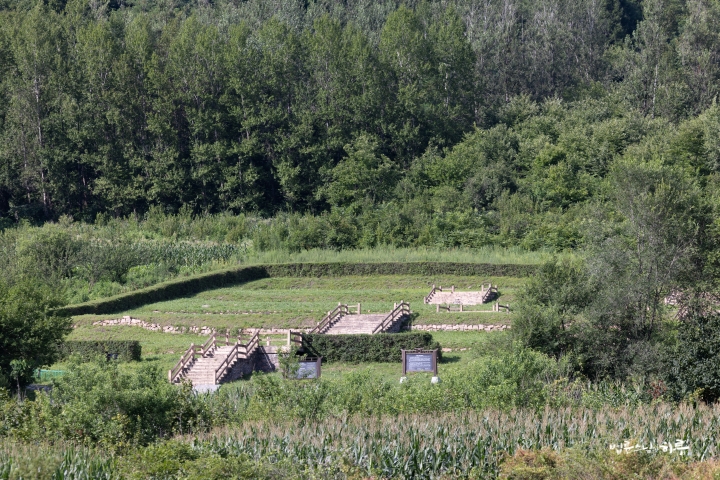
“Because the interior of Hwando Mountain Fortress is very spacious, there are several tombs and palace sites. While Hwando Mountain Fortress was a temporary refuge palace for the king, after Gungnae Fortress was captured and burned, they abandoned Gungnae Fortress and used Hwando Mountain Fortress as the official capital for a while. Because it was used as an official royal palace rather than a temporary palace, there is a very large palace site.” 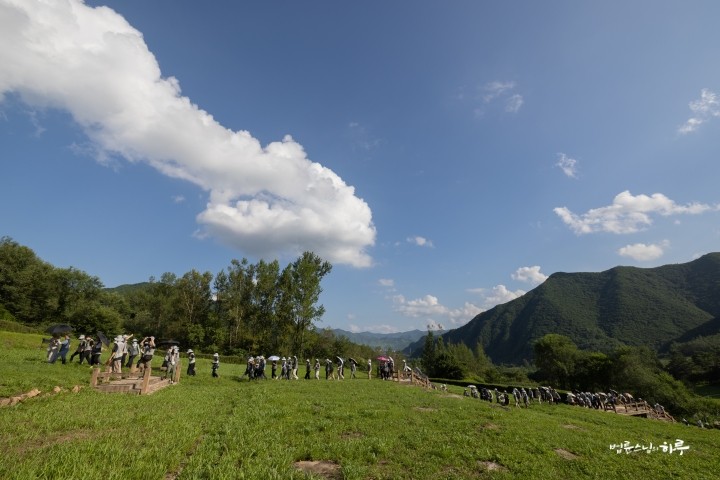
As they left Hwando Mountain Fortress, they looked at the fortress walls once more. Now the dog-tooth construction method was clearly visible. The more closely they examined it, the more they thought it truly was a natural fortress.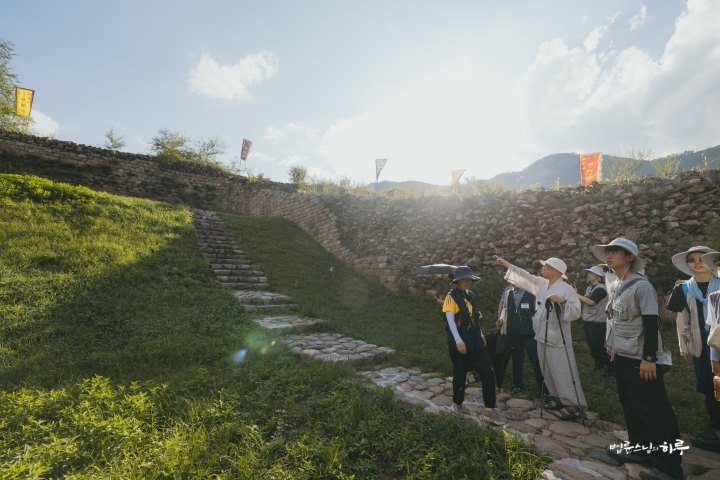
Upon leaving Hwando Mountain Fortress, the tomb complex below the mountain fortress appeared. There were really many large tombs in the open field. Sunim continued his explanation while looking at the tomb complex.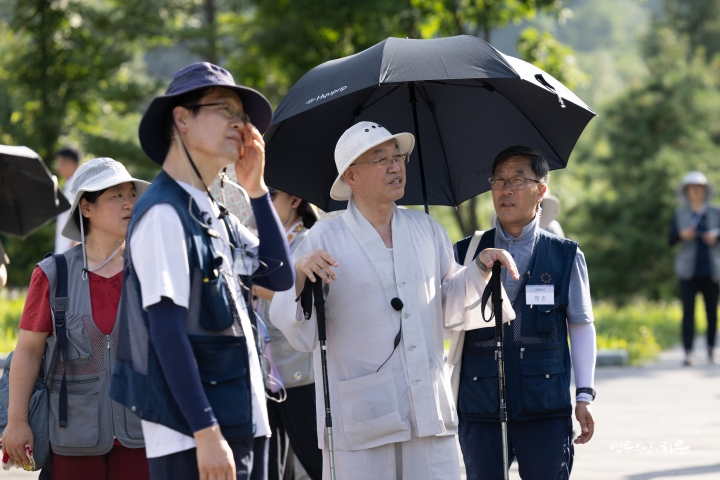
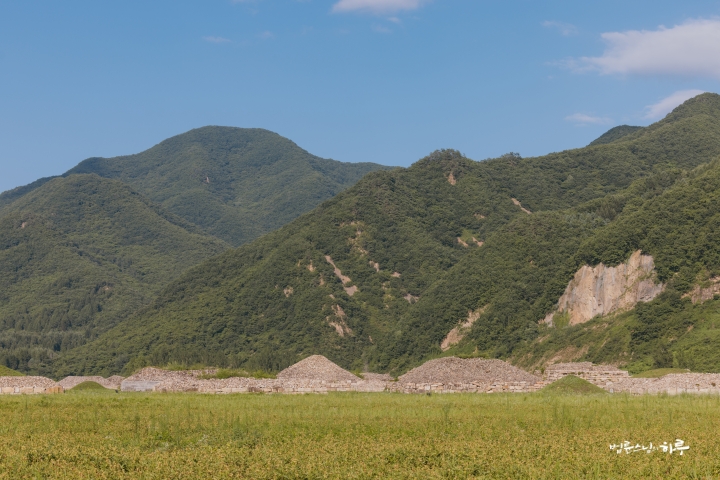
“Below Hwandosanseong Fortress, there is an area called ‘Sanseongha Tomb Complex’ where numerous tombs are spread along the riverside. Just like Bonghwangdae that you can see in Gyeongju, there is also a tomb complex here. Among these tombs, there are two-story ones, as well as three, four, and five-story ones. Although many have been destroyed, they initially started as single-layer structures where stones were piled up, the body was placed inside, and then covered with stone slabs. Later, the burial method evolved to stack two, three, four, and up to seven layers. We’ll now take a slow walk around the tombs. From now on, Mr. Lee Seung-yong will guide you. I’ll take a rest.”
“Sunim, please rest.”
The participants toured the Sanseongha Tomb Complex with Mr. Lee Seung-yong’s guidance and listened to detailed explanations. They could observe the evolution of Goguryeo tombs at a glance, from small stone-mound tombs to large chamber tombs with stepped platforms.

After viewing the Sanseongha Tomb Complex, the tour group headed to Gungnaeseong Fortress.
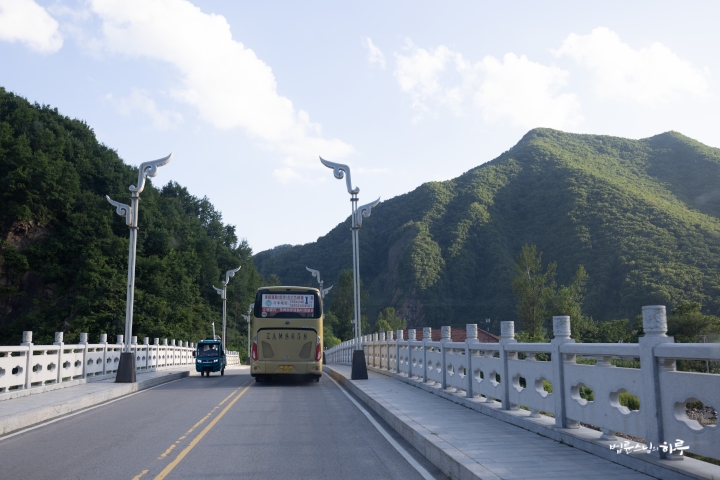
At 5 PM, they arrived at Gungnaeseong Fortress. It took less than 5 minutes by bus from Hwandosanseong Fortress. With everyone gathered at the northeastern corner of Gungnaeseong Fortress, Sunim continued his explanation.
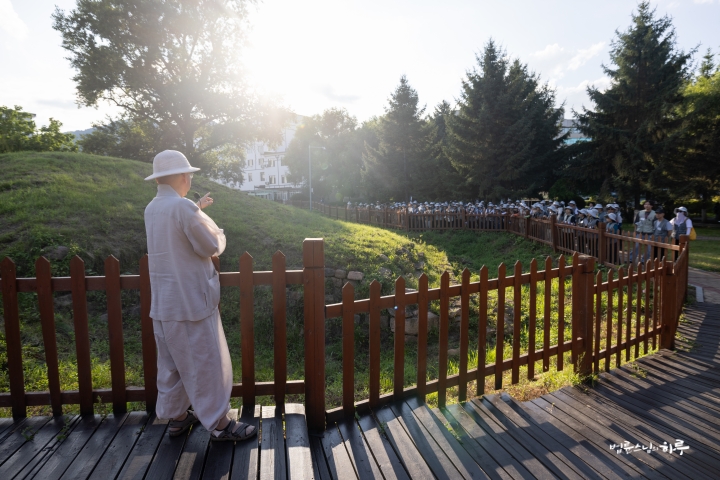
“The wall that extends from where we are standing now is the eastern wall of Gungnaeseong Fortress. And over there where you will be walking is the northern wall. This is the corner where the two walls meet.
The Wisdom of Goguryeo Hidden in the Walls of Gungnaeseong Fortress
Corners have the highest probability of being destroyed and captured when under enemy attack. This is because enemies can attack from the side, while defenders can only defend from one side. Therefore, corners are always disadvantageous for defense. That’s why Goguryeo made the corners of the fortress walls round and circular. This makes it very difficult to attack the corners. They expanded the defensive area. Usually, fortress walls have sharp corners with watchtowers on top. However, Gungnaeseong Fortress has rounded corners and structures called ‘chi’ on both sides. ‘Chi’ refers to structures built outward to protect the fortress walls. This can be considered a distinctive feature of Goguryeo’s Gungnaeseong Fortress.
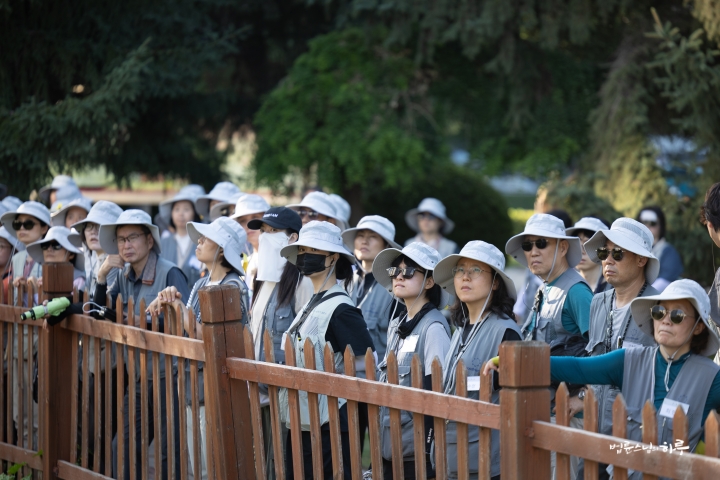
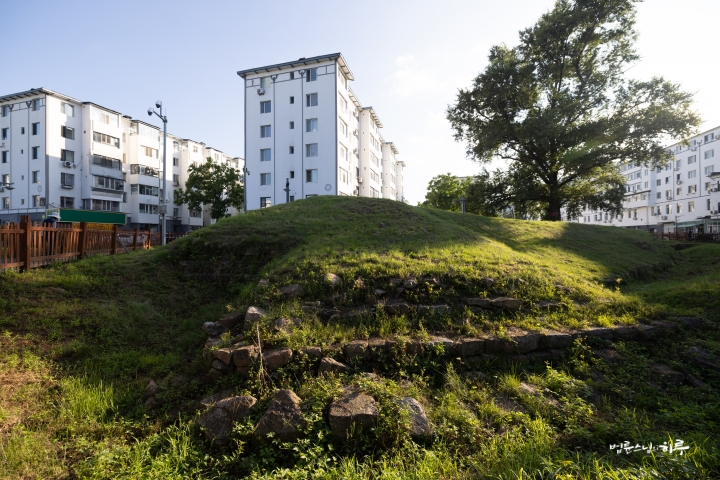
On the side where you are standing, there is a moat, or waterway. When you visit the Forbidden City, isn’t there a large waterway outside the castle? Gungnaeseong also had a moat. 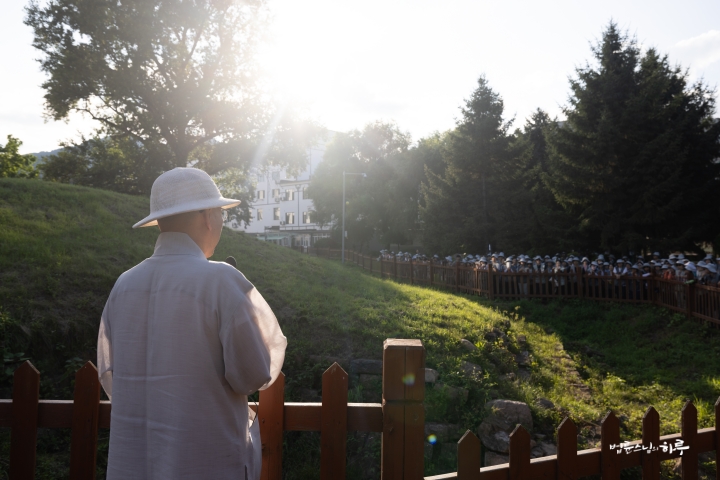
The fortress walls were built in a pyramid style, with each tier slightly recessed from the bottom, and then built vertically on top. The height was said to be about 12 meters. Until the Japanese colonial period, 7 meters of the walls remained, but now they have been largely destroyed, with less than 3 meters remaining. Currently, there are many apartments inside the fortress. Originally, when registering with UNESCO, there was a condition to demolish all the apartments inside and restore the site within 10 years, but this has not been well implemented. 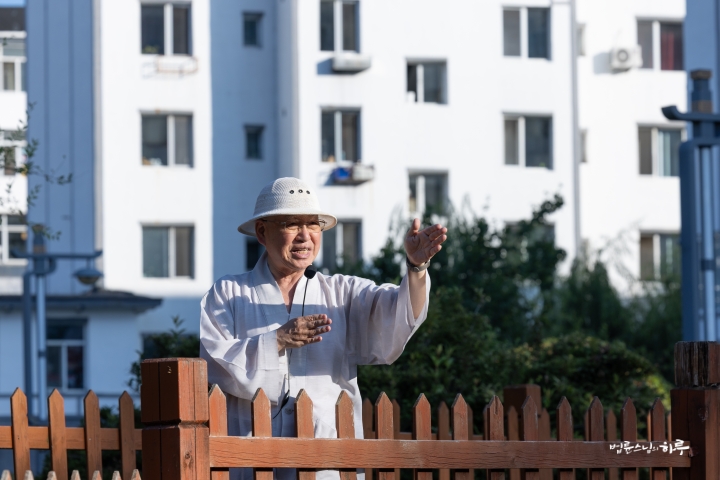
During its 425 years as the capital, Gungnaeseong fell three times. However, most enemies could not invade as far as Gungnaeseong. During the invasion by Guanqiu Jian of Wei, it is said that King Dongcheon abandoned Gungnaeseong and fled to Okjeo, barely escaping death. During the invasion by Murong Huang of Former Yan, the king expected the enemy to come from the north and took all his troops north, but was ambushed from the south and the fortress fell. When he returned, Murong Huang had desecrated his father’s corpse, kidnapped the queen and his mother, and taken 10,000 people as hostages – a tragic history. However, apart from these incidents, Gungnaeseong mostly achieved stable development. When Goguryeo moved its capital to Pyongyang in 427, China had been unified by Northern Wei, and Northern Wei and Goguryeo had formed a marriage alliance, so there were no wars for about 100 years after that. That’s why during King Jangsu’s reign, they could move the capital to Pyongyang and pursue a southern expansion policy attacking Baekje.
Suddenly, Chinese police stopped the explanation, so Sunim had to discontinue. The tour group, guided by Mr. Lee Seung-yong, started from the northeast corner of Gungnaeseong and walked along the northern wall.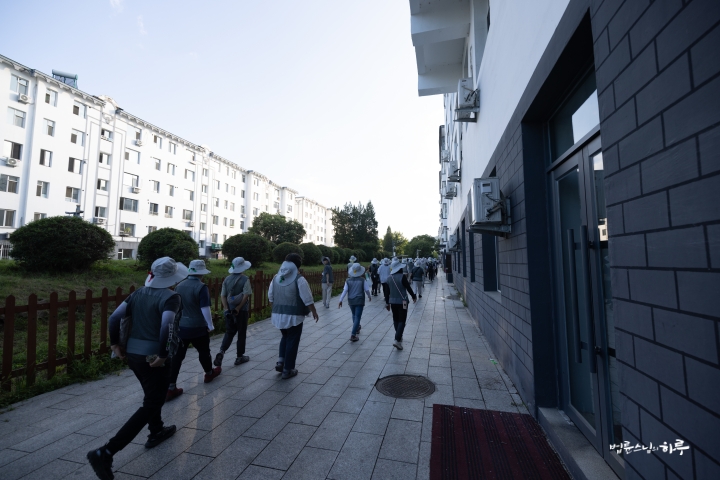
Many walls had crumbled with the passage of time. Some walls were cut through to make roads, and stones from the walls had been taken to build houses and then haphazardly piled back. Nevertheless, in some sections, traces could be found of the Goguryeo people’s unique construction methods used to build very solid fortresses.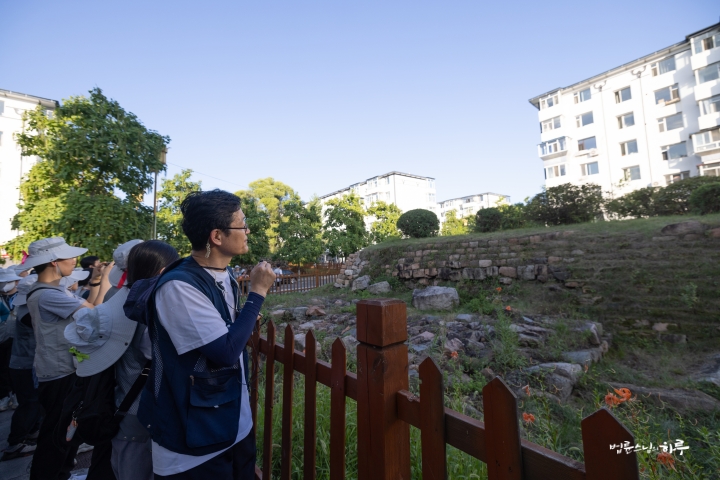
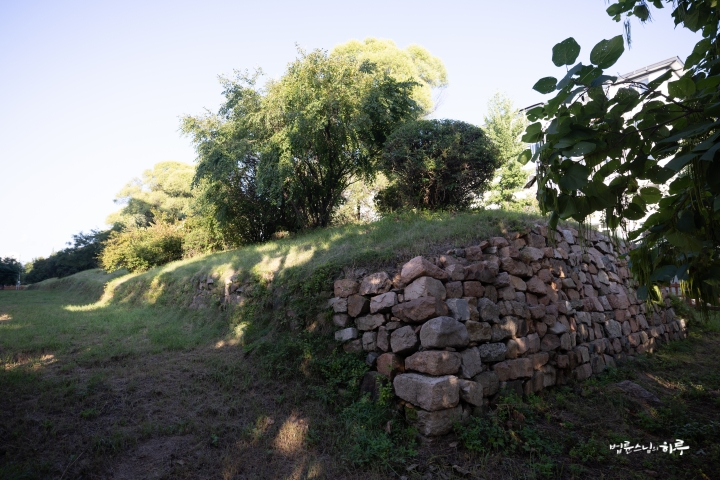
Walking along the northern wall and turning toward the western wall, the Tonggou River flowing down from Mount Hwando appeared in the distance. The setting sun beyond the mountains quietly settled on the waves of the Tonggou River, sparkling with the light of sunset.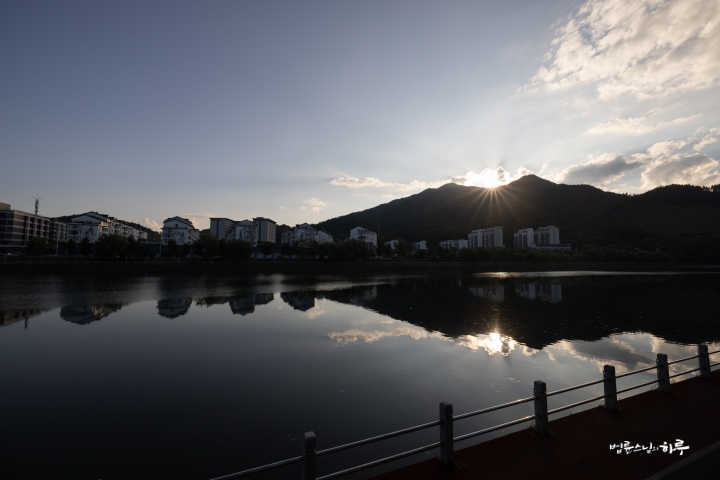
The western wall was built to curve along the river and included drainage channels. In particular, the western gate was built in a U-shape to simultaneously prepare for floods and enemy invasions. The wisdom of the Goguryeo people permeated every part of the fortress walls.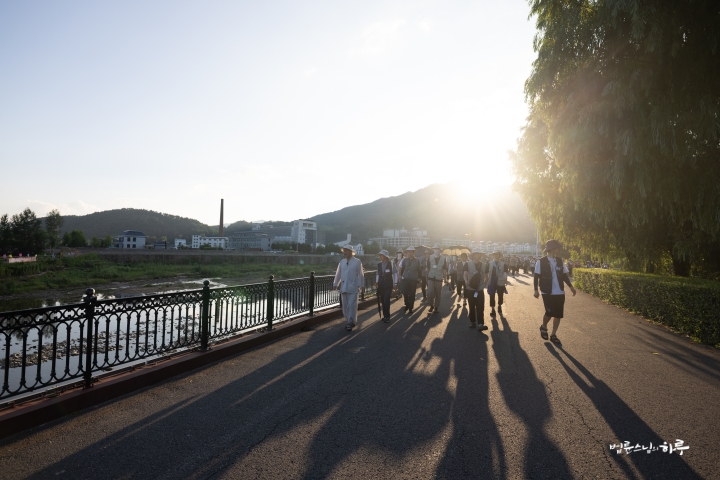
“Goguryeo safely protected its capital during times of national crisis and did not fight wars near the capital. They mainly rode horses out to fight enemies in the Manchurian and Liaodong plains to defend the country. Therefore, while the actual capital was here at Gungnaeseong, the main stage of activity for the Goguryeo people was not here but Liaodong Fortress.”
Turning toward the southern wall, the Yalu River finally appeared. Beyond the Yalu River, North Korean land was visible. Smoke was rising from a chimney towering on the mountain.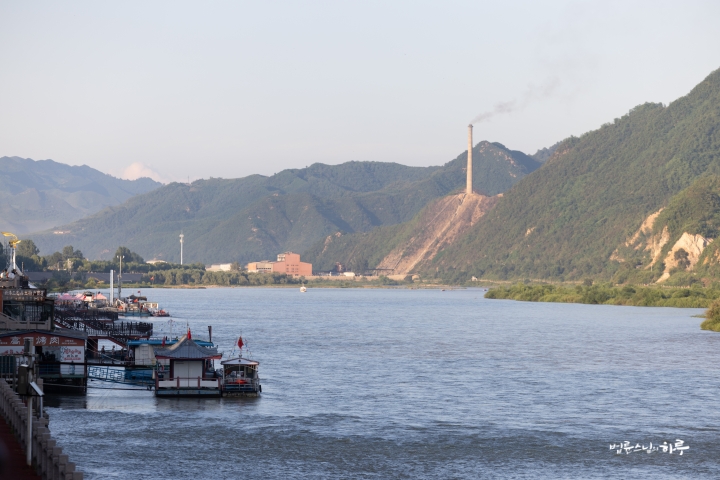
Looking at the North Korean land, Sunim told the story of how he first began the movement to help North Korean compatriots.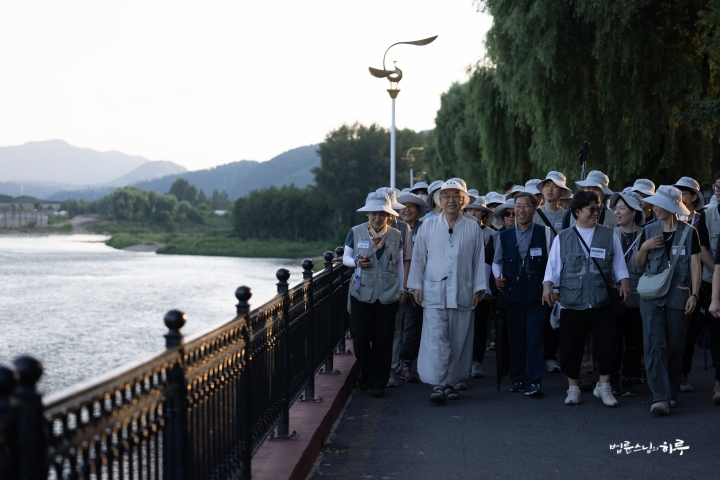
“I first began the movement to help North Korean compatriots because of a connection made right here. From 1994, I went on historical tours along the Yalu River, and at that time I heard that ‘people are starving to death in North Korea.’ At first, I didn’t believe it. I said, ‘I understand that North Korea is poor, but how can residents be starving to death? That’s nonsense.’ But they insisted it was true. They said they would show me and put me on a boat, taking me up along the Yalu River to Manpo City.
Beyond the Yalu River, a Starving Child Sat Silently
When we approached by boat to within about 5 meters of North Korea, I could really see the shabby and emaciated appearance of the people. At that time, there was a young child sitting on the dock, holding a stone in his hand and hitting a piece of metal – tap, tap, tap. The appearance of the skinny child was pitiful. Even when I called out ‘Child, child,’ there was no answer – he just kept his head down. When I asked, ‘Why doesn’t the child answer?’ the Chinese person who went with me replied.
‘Korean children don’t even have the freedom to beg.’
His words meant that in North Korea, they educate children that asking outsiders for anything brings shame to the motherland, so children don’t beg even if they’re starving to death. When I said, ‘Stop the boat. Let’s give them some food,’ they said no. It was okay to pass by on the boat, but stopping the boat would constitute illegal entry. 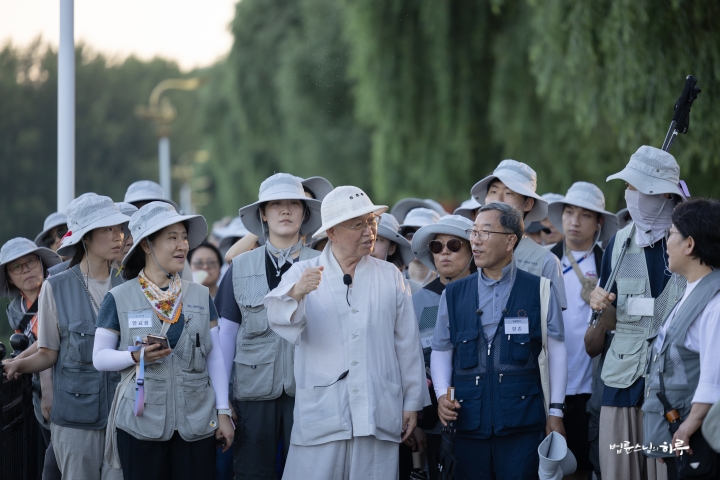
At that moment, so many thoughts crossed my mind. I had money in my pocket, and there was plenty of food on this side in China, yet I couldn’t give food to the starving child right in front of me. Birds can fly from one side to the other to find food, and animals can cross over to survive, but humans cannot. It was heartbreaking. On one side, there was an abundance of food, while just across the border, people were starving to death. We created nations and borders to live better lives, but the reality seemed worse than that of animals. At that time, I was actively building Sujata Academy in India to help impoverished children. It felt contradictory that while my own people were starving to death right next to me, I was turning away from them to help people from another country far away in India.
Closer Than India, My Own People Were Dying
That incident prompted me to start the movement to help North Korean compatriots. At first, I thought only some residents were starving due to food shortages in North Korea. However, when I investigated directly, the number of deaths from starvation was staggering. As a result, the entire Jungto Society began participating in the movement to help North Korean compatriots, and we also started helping North Korean refugees who had crossed the border. 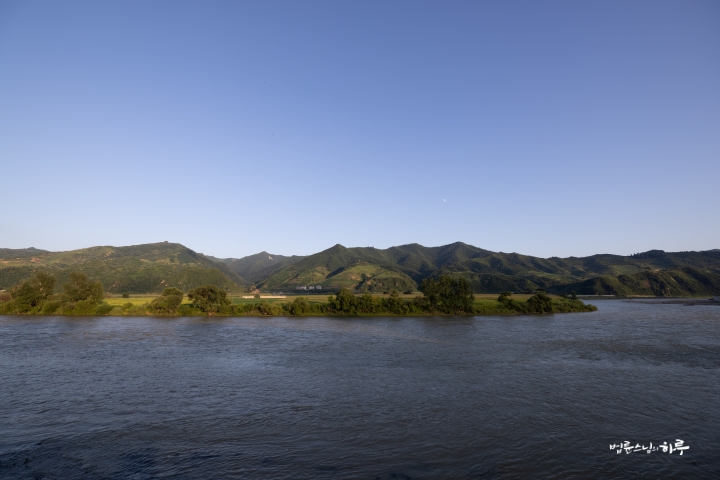
I boarded a boat right here in front. If you take a boat from there and go upstream, you can see Manpo City in North Korea. In the 1960s, roads were already built on the North Korean side, while there were no roads at all on the Chinese side. When a great famine struck China in the 1960s and countless people were starving to death, about 100,000 ethnic Koreans crossed over to North Korea. At that time, North Korea provided them with jobs and homes and helped them settle. So in the early days of North Korea’s food crisis, the elders who remembered those old days took good care of the refugees coming from North Korea to China. However, as time passed and the number of people crossing the border increased dramatically, and younger people didn’t know about the past, conflicts began to arise. The Chinese government also started cracking down. Tragic situations such as forced repatriation and human trafficking occurred.
Therefore, we simultaneously engaged in humanitarian aid to help those in need within North Korea, refugee support for those who crossed into China, and activities addressing human rights violations occurring in both North Korea and China. In particular, protecting North Korean women from suffering through human trafficking and sex trafficking became a major challenge. So we divided our roles: ‘JTS’ handles humanitarian aid, ‘Good Friends’ addresses human rights protection, and ‘The Peace Foundation’ deals with Korean Peninsula peace issues. All of this work ultimately began with the history tour as a catalyst. That’s why the history tour and the movement to help North Korean compatriots are very closely connected. 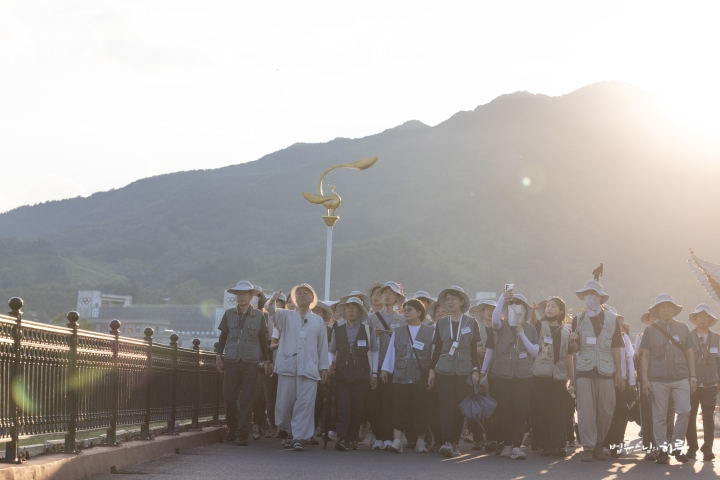
“Looking at the current situation, North Korean roads are still unpaved and in terrible condition. In contrast, China has built new roads all the way up to the upper reaches of the Yalu River and paved them. At night, the North Korean side is pitch dark, while the Chinese side is brightly lit. In the 1960s, North Korea was bright and the Chinese side was dark, but now the situation has completely reversed. This happened in just 40 years.”
The river flowed peacefully, and birds still freely flew back and forth across the Yalu River. The tour group expressed their gratitude to Sunim with warm applause after he finished his guidance.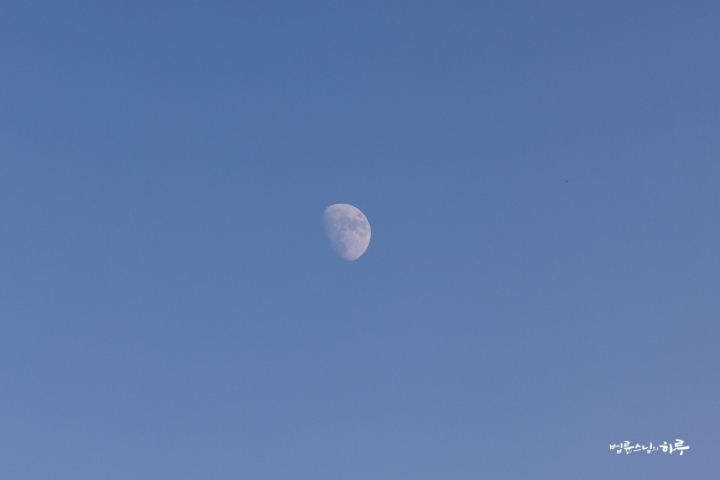
After having dinner by the Yalu River, everyone gathered in the auditorium at 7:50 PM. Before the lecture, they sang songs together joyfully, and then Sunim began his presentation.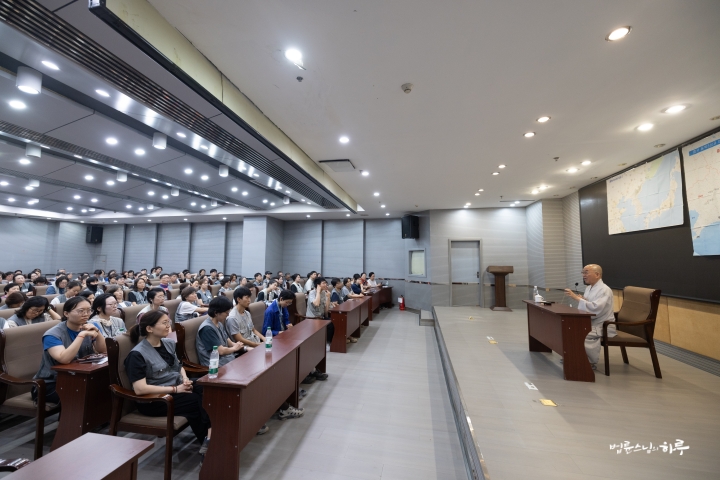
Sunim pointed to a map and explained the tour group’s 6-night, 7-day itinerary in an easy-to-understand way.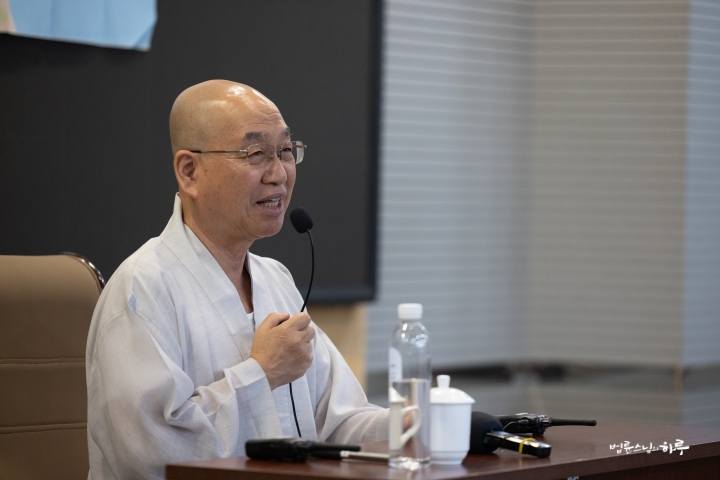
“It’s been a long day, hasn’t it?”
“Yes.”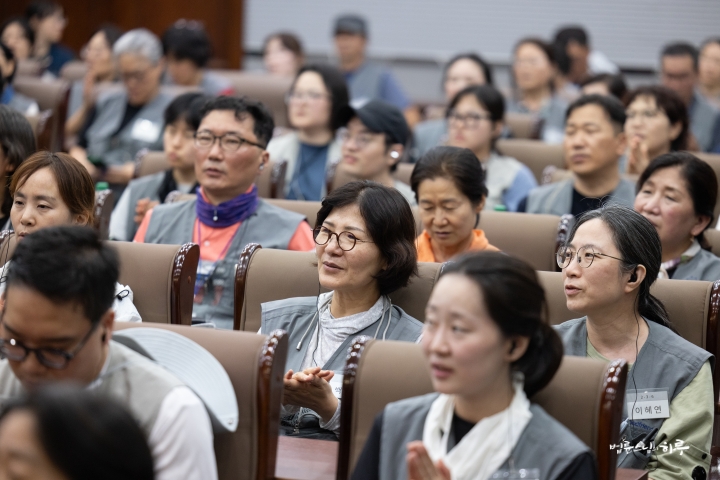
“Today was a day filled with Goguryeo. Why are we touring parts of Liaoning, Jilin, and Heilongjiang provinces, which are now China’s borderlands? It’s because this region, centered around Mount Baekdu, was the main stage of our people’s activities in the past – the Korean Peninsula and Manchuria. Today’s Republic of Korea is confined to the Korean Peninsula, making this area a borderland for both us and China, but in the past, this region was the center stage of our history. 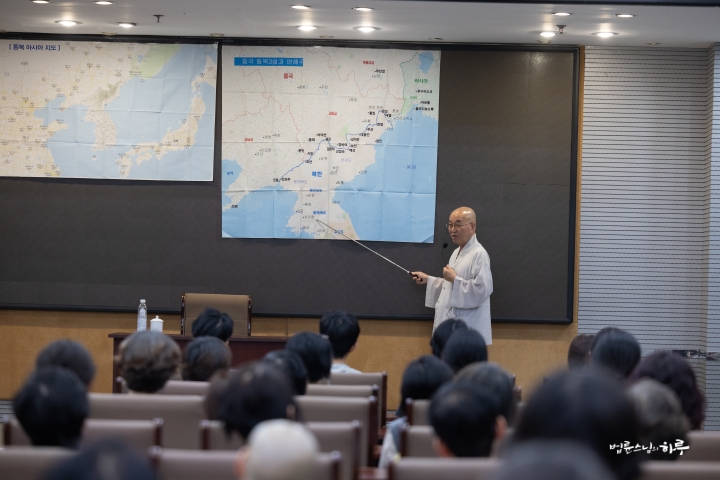
Yesterday and today, we mainly looked at Goguryeo’s history. The most distinctive feature of Goguryeo is the pyramid-style stone mound tombs. No other ethnic group in Asia has such pyramid-style tombs. Therefore, this shows Goguryeo’s uniqueness. In the Chaoyang region of China, where the Liaohe civilization is being excavated, it has been revealed that dozens of large ancient stone mound tombs were already built 4,500 to 5,000 years ago. These tombs also have an almost pyramid-like shape. In this respect, Goguryeo can be seen as inheriting the Baedal civilization. It’s Gojoseon inheriting Baedal civilization, Buyeo inheriting Gojoseon, and Goguryeo inheriting Buyeo. Looking further back, isn’t the dolmen the burial style of our people’s prehistoric period? All of this can be seen as having developed from dolmens. In this regard, I believe that with a little more research, we can establish the legitimacy of our ethnic history connecting Baedal civilization, Gojoseon civilization, Northern Buyeo, and Goguryeo – which we have thought of as myths until now. 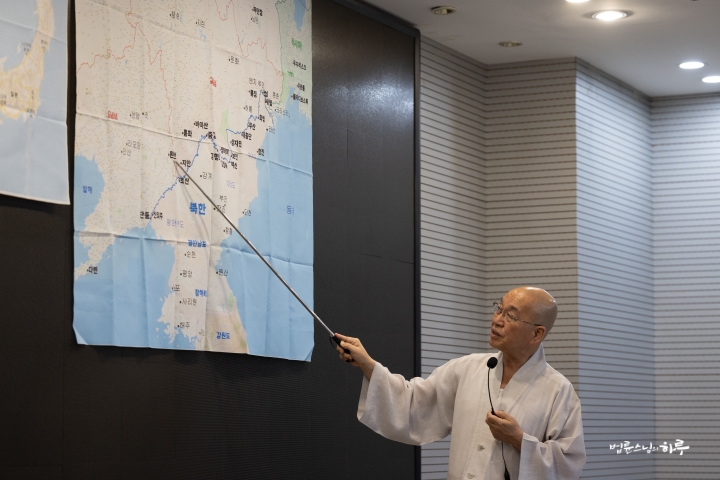
This region was also a center of independence movement activities during the Japanese colonial period, centered around Mount Baekdu. Every valley we visit bears traces of the independence movement. While textbooks mainly focus on major battles and victories, in reality, each valley held its own sorrows and many sacrifices were made. Through this tour, we aim to honor the unseen spirit and blood of those who sacrificed for our nation’s independence.”
Following this, Sunim opened the floor for questions. Two young participants immediately raised their hands to ask questions. One of them expressed that hearing about the Yoha civilization as the roots of our people had begun to instill a sense of pride, but wondered how we could restore our history given the relationship with China.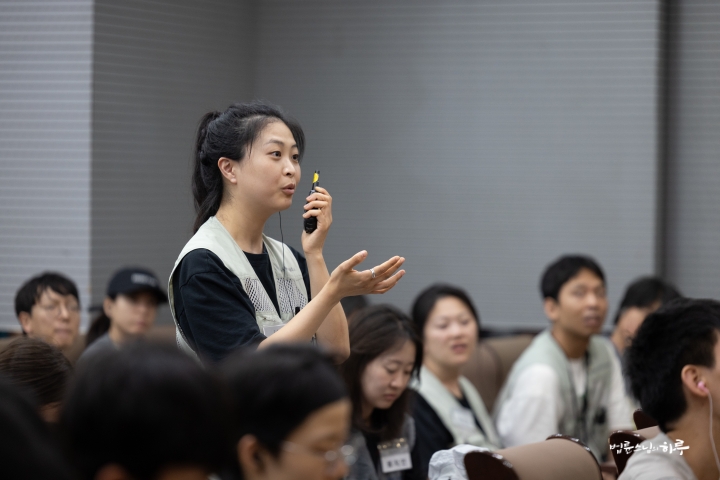
If the Yoha Civilization Is Our Root, How Can We Restore It as History?
“In relationships with people, it would be nice if the other party were honest and gentlemanly. However, that’s not always the reality. Criticizing others for pursuing their interests or acting unfairly doesn’t really help solve problems. Just as Trump pursues America’s interests, China will pursue its own interests, and there’s no way we can stop that. Beyond judging it as good or bad, we need to accept this as a situation and approach it from the perspective of how we can respond in a way that leads us to a better position than we are now. 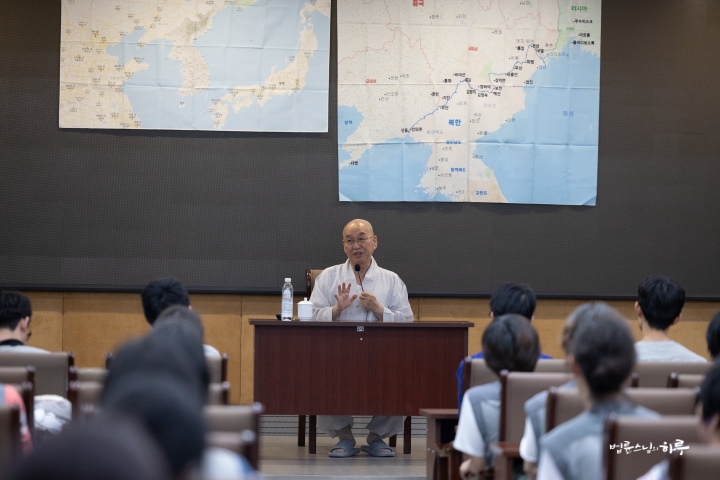
Let’s look at China’s national policy. Currently, there are 56 ethnic groups within Chinese territory. China used to think of itself as a country of the Han people. The Qing Dynasty was a country where the Manchus invaded the Central Plains and ruled for 300 years. So China thinks they overthrew the Qing Dynasty and reclaimed their country. From this perspective, the Han people would represent China. However, if they think that the Han people are China, then 45 percent of their territory wouldn’t be theirs. China wouldn’t voluntarily give this up. Why would they give up what they have when they’re trying to take what they don’t have? When the Qing Dynasty fell, Tibet declared independence and briefly became an independent nation, but as soon as the People’s Republic of China was established, they immediately attacked militarily and nullified the independence. That’s why the Dalai Lama went into exile in India.
So the current People’s Republic of China defines itself as a country of 56 ethnic minorities. They created the term “Chinese nation” rather than a country of Han people. The 56 ethnic groups came together to create the larger framework of the Chinese nation, so the People’s Republic of China is the country of the Chinese nation. Therefore, they’ve defined the past history of all people currently living within the territory of the People’s Republic of China as part of Chinese history. If there are one million ethnic Koreans living there, then the past history of ethnic Koreans is also considered part of Chinese history. Any past history within their territory is considered part of Chinese history. 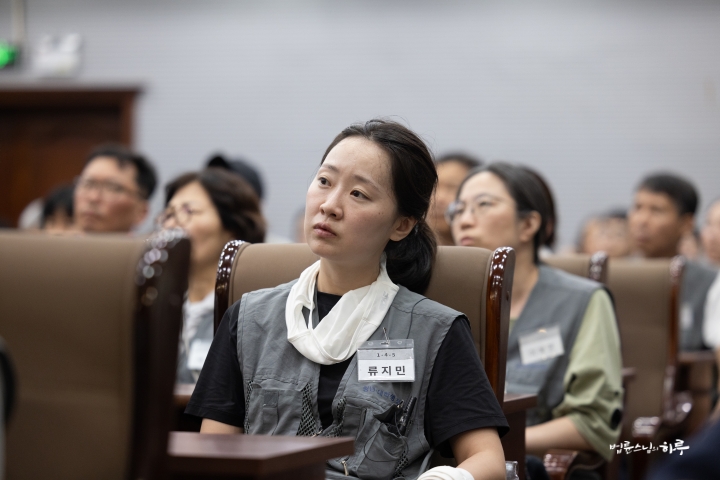
This is why Chinese historiography distinguishes between central and peripheral histories. The Tang Dynasty belongs to central history, while Balhae belongs to peripheral history. So when the Tang Dynasty was part of central history, they say that in the east, ethnic minorities such as the Mohe and Goguryeo peoples established a state called Balhae. When writing about it, they always express it as “Balhae State during the Tang Dynasty period.” In this way, they are promoting integration of all history within their territory. That’s why the Chinese government is even sensitive about our trips to see how our ancestors lived in the past.
We have excluded even our actual existing history from our own historical narrative due to partisan and historiographical biases. For example, we excluded Balhae history from our history. Since Silla and Balhae were in conflict with each other, from a Silla-centric historiographical perspective, Balhae wasn’t considered our country. In Goryeo, which succeeded Silla, Balhae was not part of our history, and Joseon, which succeeded Goryeo, also did not accept Balhae as our history. It wasn’t until the introduction of Silhak (Practical Learning) in the late Joseon period that people began to view Silla and Balhae as the Northern and Southern States. In that case, Balhae’s history becomes half of our history. There is a significant difference here.
While China has a historiographical view that considers the history of other ethnic groups as part of their own history within a larger framework, we have a perspective that even our own history is not ours for certain political reasons. As a result, our history keeps getting smaller while China’s history keeps getting bigger. 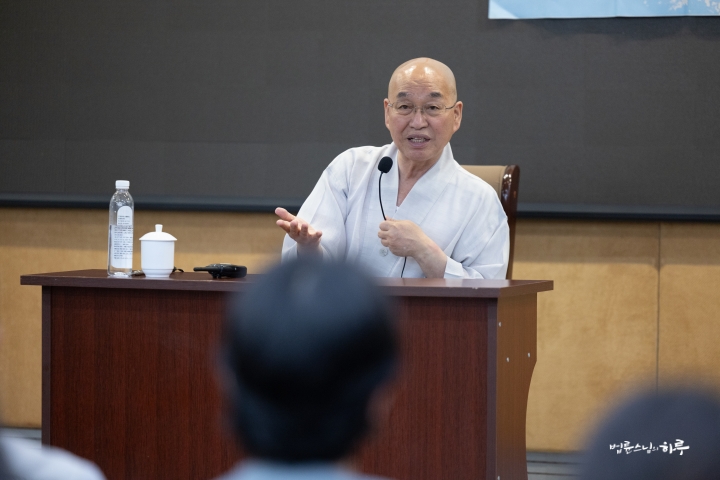
That’s why I believe we need to view this from a civilizational perspective. We should be able to distinguish between the Chinese history of southern civilization and our history of northern civilization. Only then can we see that all the minority ethnic groups of the same lineage around us become part of our nation. In other words, during the Gojoseon period, they became Gojoseon people; during the Goguryeo period, they became Goguryeo people; and during the Balhae period, they became Balhae people. When Balhae fell, these minority ethnic groups began to emerge in history. Parts of the people who lived in Balhae’s territory gained independence – the Khitan people established the Liao Dynasty, the Jurchen people established the Jin Dynasty, and the Mongol people established the Yuan Dynasty and became powerful. We moved south to the Korean Peninsula and continued through Goryeo and Joseon, but viewing only this as our history is too biased toward an ethnic perspective. This inevitably makes the scale of our history smaller. Having such misguided beliefs about our national history leads to an overly insular perspective. That’s why we need to approach history from a civilizational standpoint. As they say, ‘The future society will be a clash of civilizations.’ We need to reestablish our national history by approaching it from a civilizational perspective.
Recently, the Korean Wave has gained global attention, and when viewed from the broader civilizational framework, we have continuously carried forward the creativity of advanced civilizations. From the metal movable type of the Goryeo Dynasty and Hangeul of the Joseon Dynasty to the turtle ship and rain gauge. While our history has been continuously diminished in some aspects, it has also maintained originality from its roots. Although we are currently in a somewhat subordinate relationship with the United States, which boasts the world’s most advanced civilization, this has also served as an advantage, allowing us to directly adopt cutting-edge civilization without going through Japan. What we’re seeing in today’s Korean Wave could be viewed as new creativity emerging from the combination of our inherent creativity with external advanced civilizations. 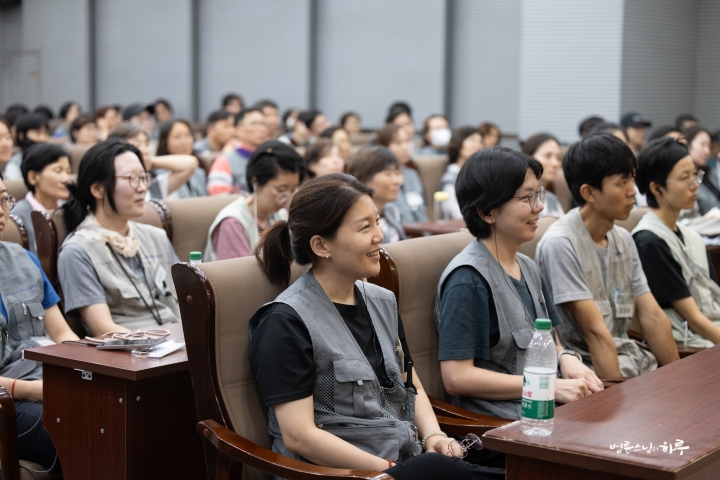
If you have an inferiority complex, creativity will never emerge. That’s why you need to develop civilizational pride by studying ancient history. By studying the history of the independence movement, you should cultivate the pride of those who fought with dignity to the end, even though they were overpowered. In the modern era, if we work harder to overcome technical aspects, we can create a world-leading advanced civilization.
However, we currently have significant shortcomings. First, we lack self-confidence, and second, we have a strong tendency to imitate. While imitation has brought us to the cutting edge, when we consider how much creativity we actually possess, sustainable development doesn’t seem easy. If young people can overcome this, we will be able to achieve sustainable development. To do this, we must above all create generational hope. But today’s young people, while they may have individual hopes, lack generational hope. For example, the generation that experienced the 1980s had pride in democratization, and before that, there was pride in industrialization. But I think today’s young people somewhat lack generational hope. As we move to the next generation, rather than expanding our potential growth drivers, they seem to be gradually depleting, eventually creating a parabolic curve that could lead to decline. 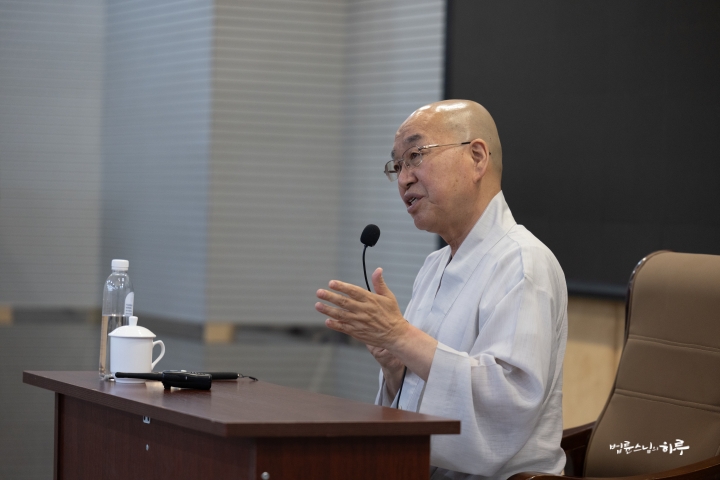
To have this kind of creativity, we must first heal our national wounds. Just as individuals heal their personal wounds through practice, we go on these historical tours to heal our national wounds. What we need now is confidence and inclusiveness rather than fear. Only when we are confident can we be inclusive; without confidence, we cannot embrace others. These historical tours also have this healing aspect.”
After listening to Sunim’s explanation, we felt our perspective on history had broadened considerably. The lecture ended at 9:30 PM. The audience expressed their gratitude to Sunim with enthusiastic applause and cheers.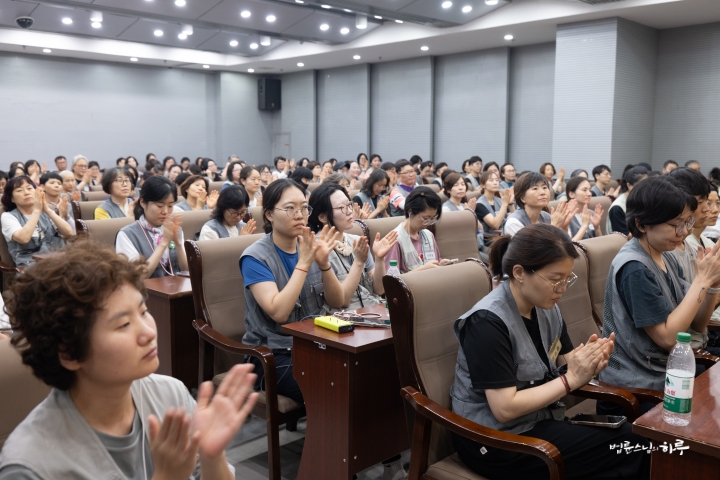
Tomorrow, the group will leave the accommodation at 5 AM to visit Gukdong Daehyeol (國東大穴), where the Goguryeo people performed heavenly rituals. They will then travel along the Yalu River, observing North Korean territory across the river while discussing “the reality of North Korea.” After paying respects at the Yeongguang Pagoda from the Balhae period, they will arrive at Erdaobaihe (二道白河), a village below Mt. Baekdu’s Cheonji (Heaven Lake).



